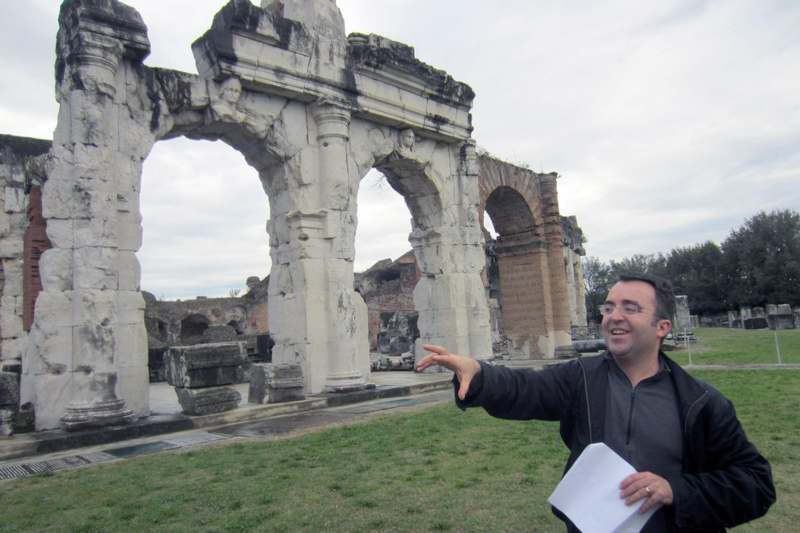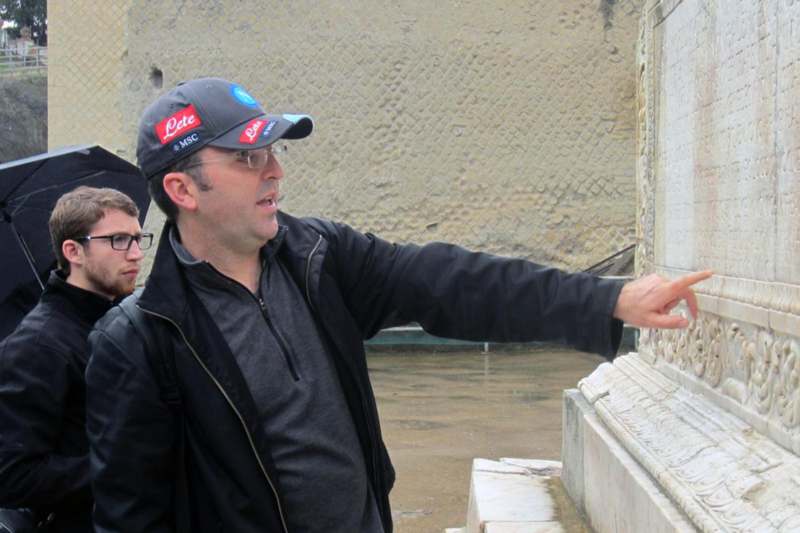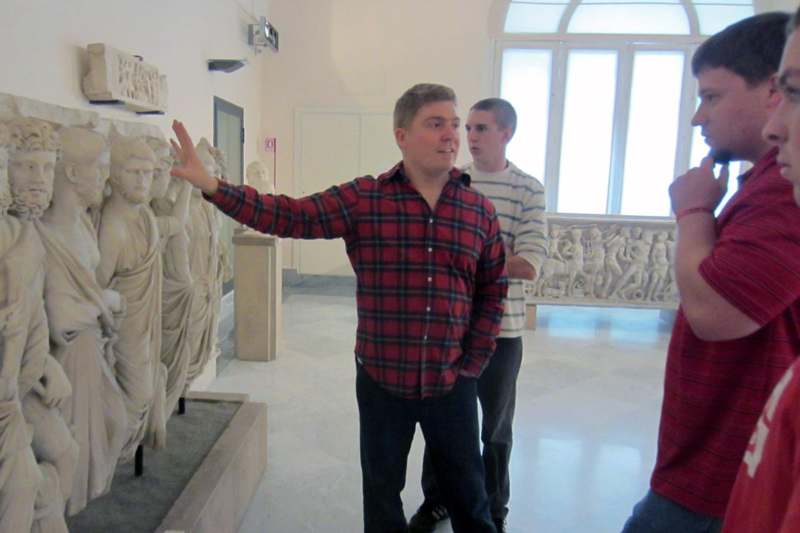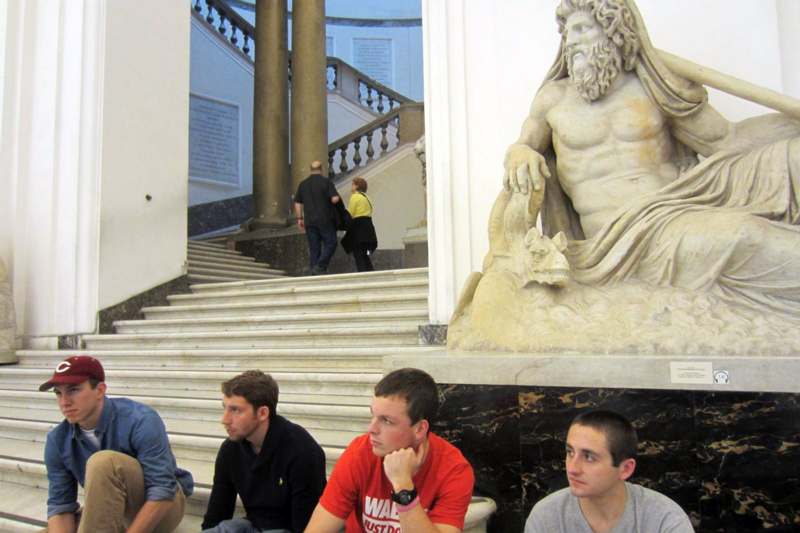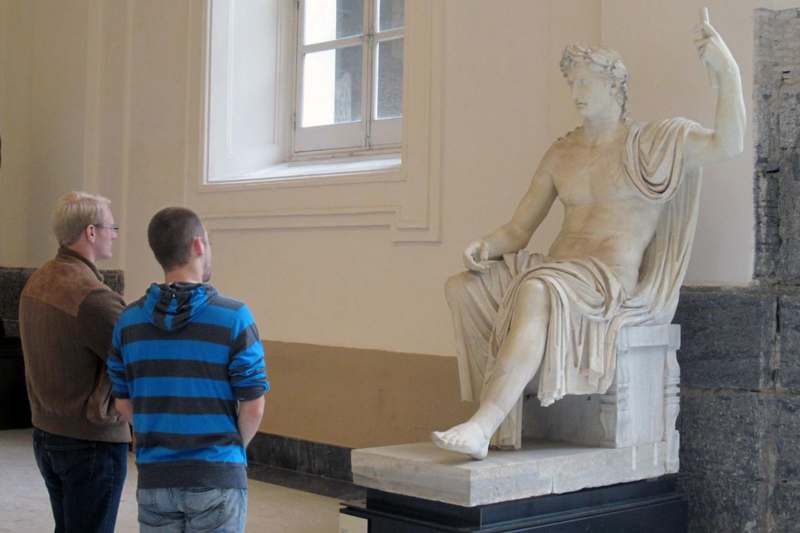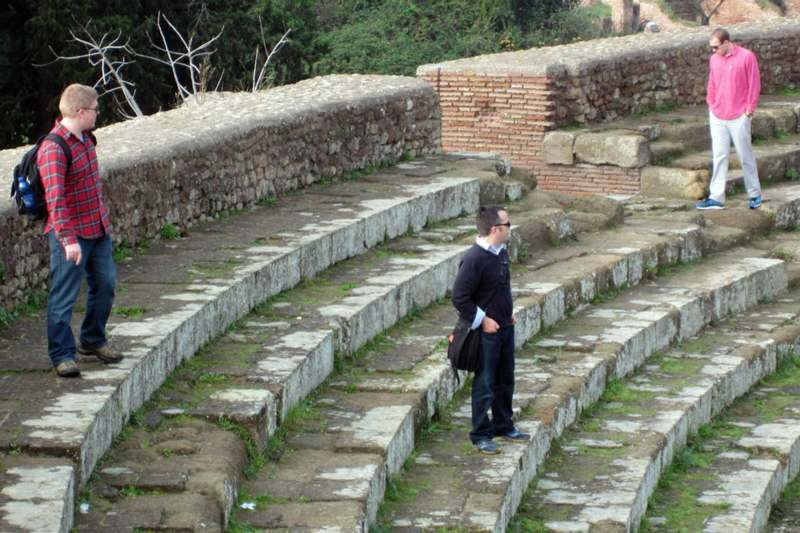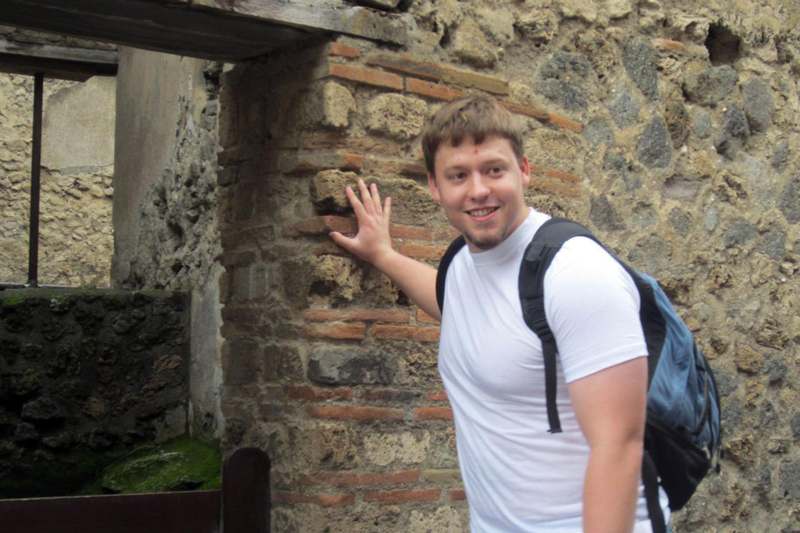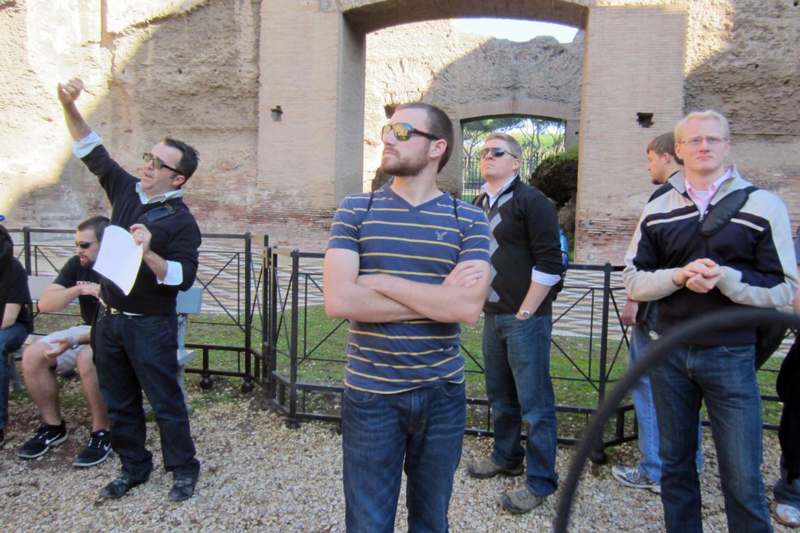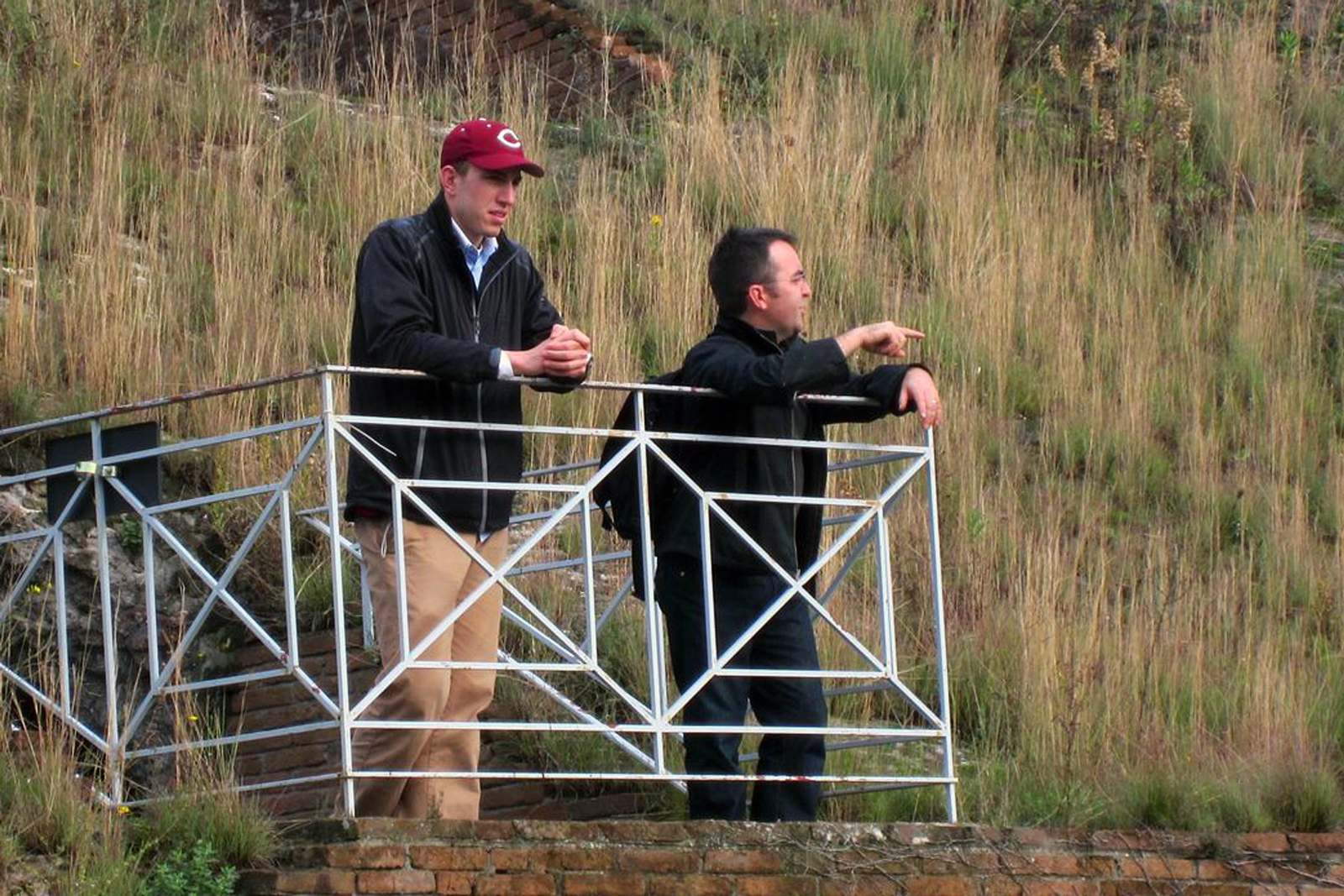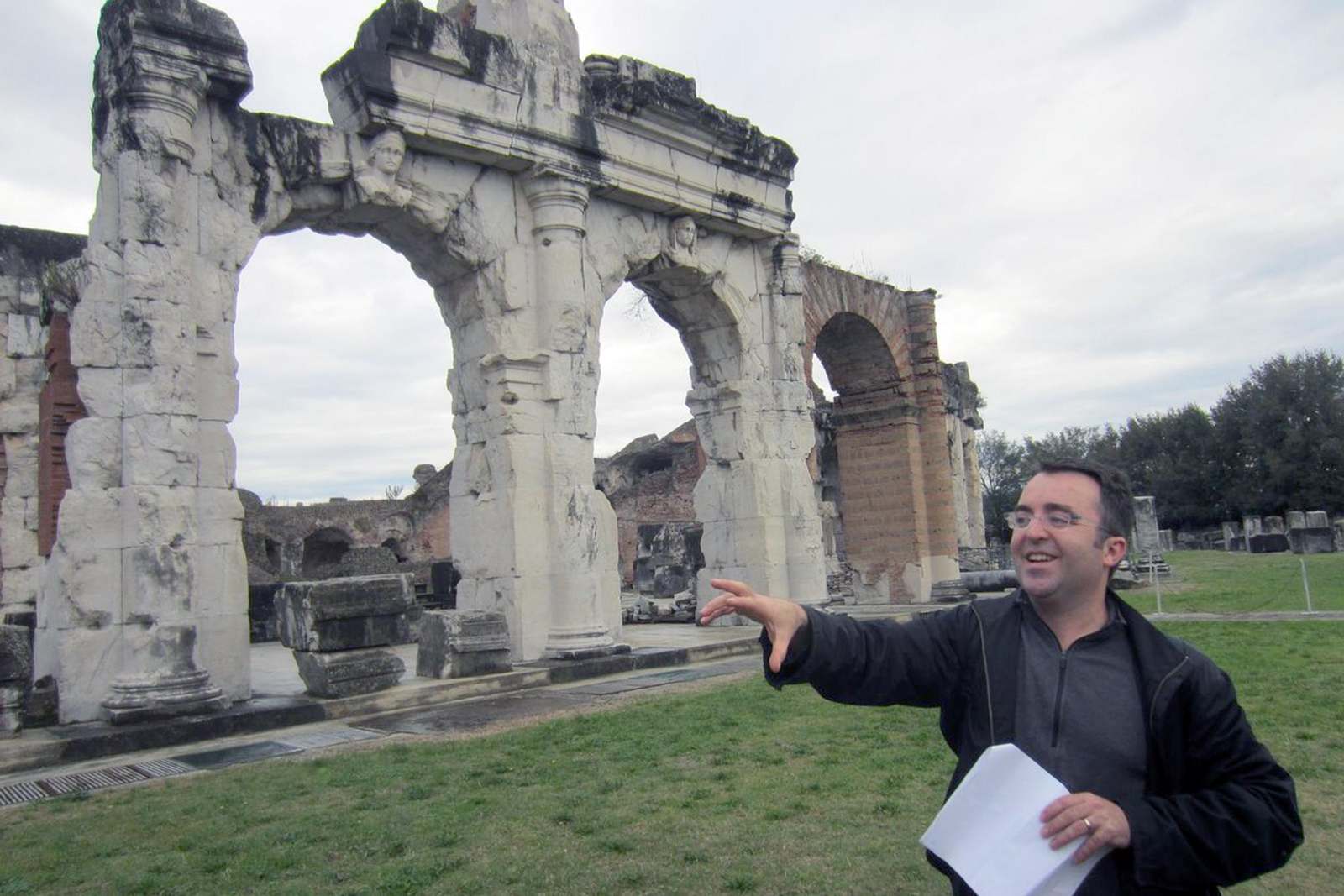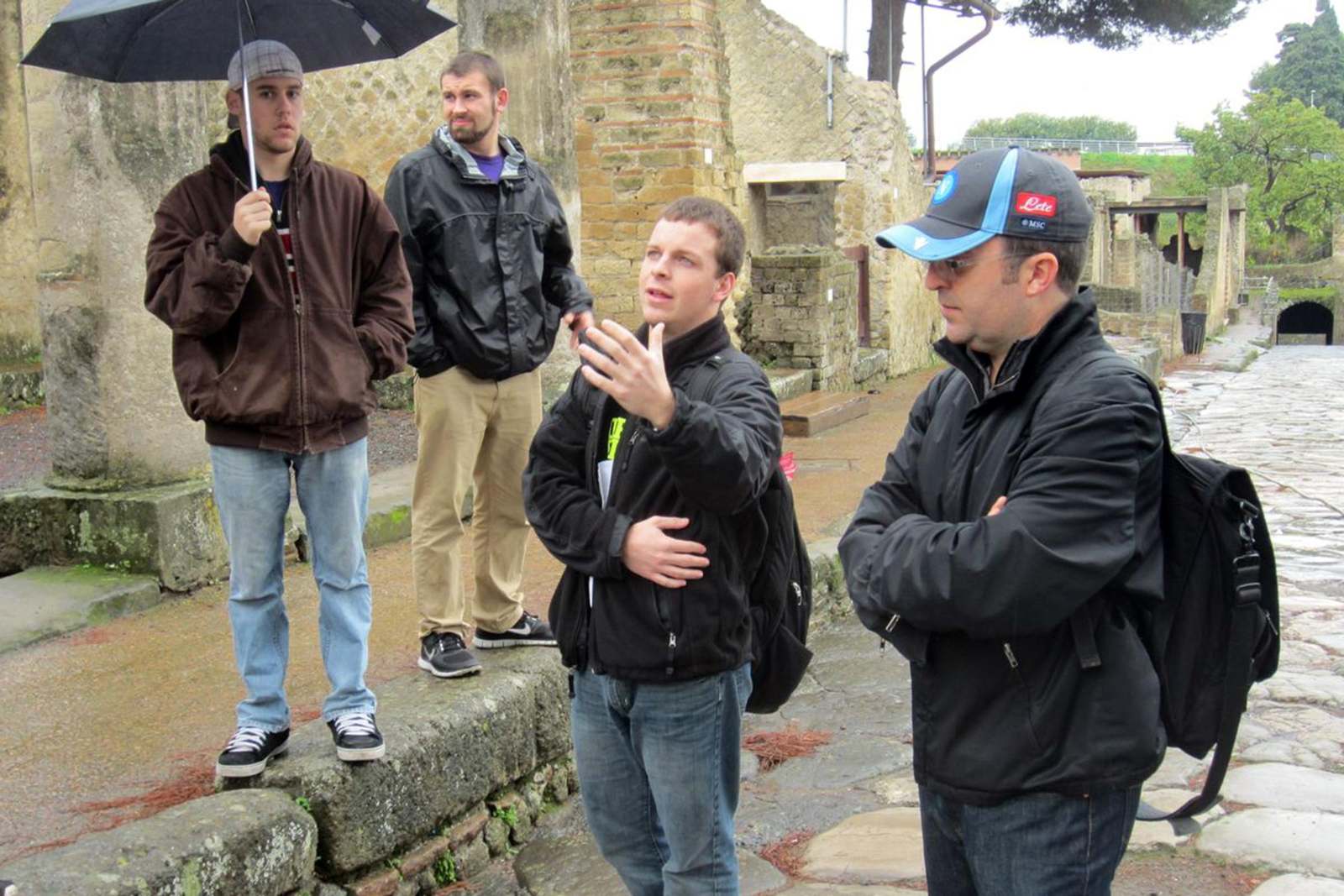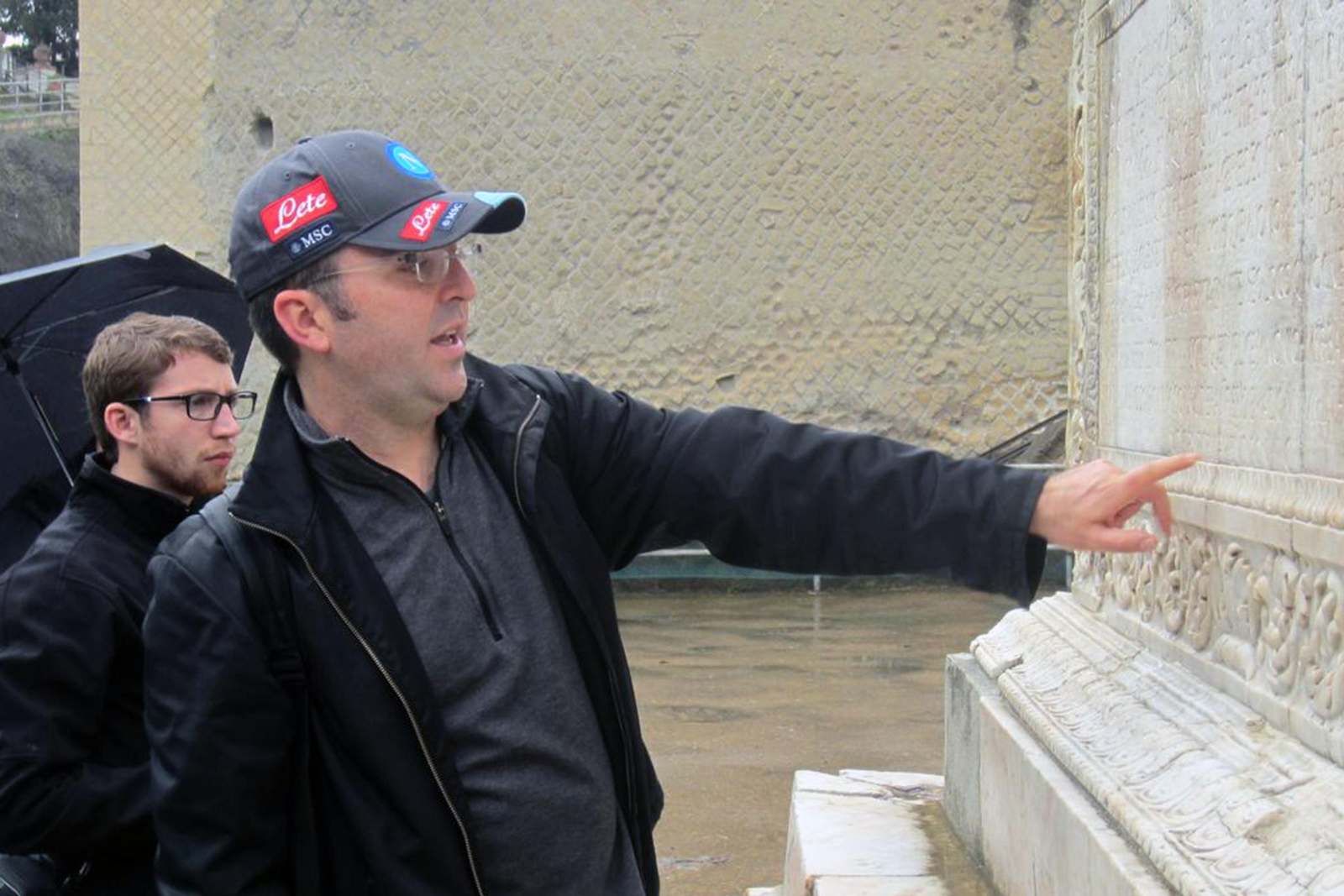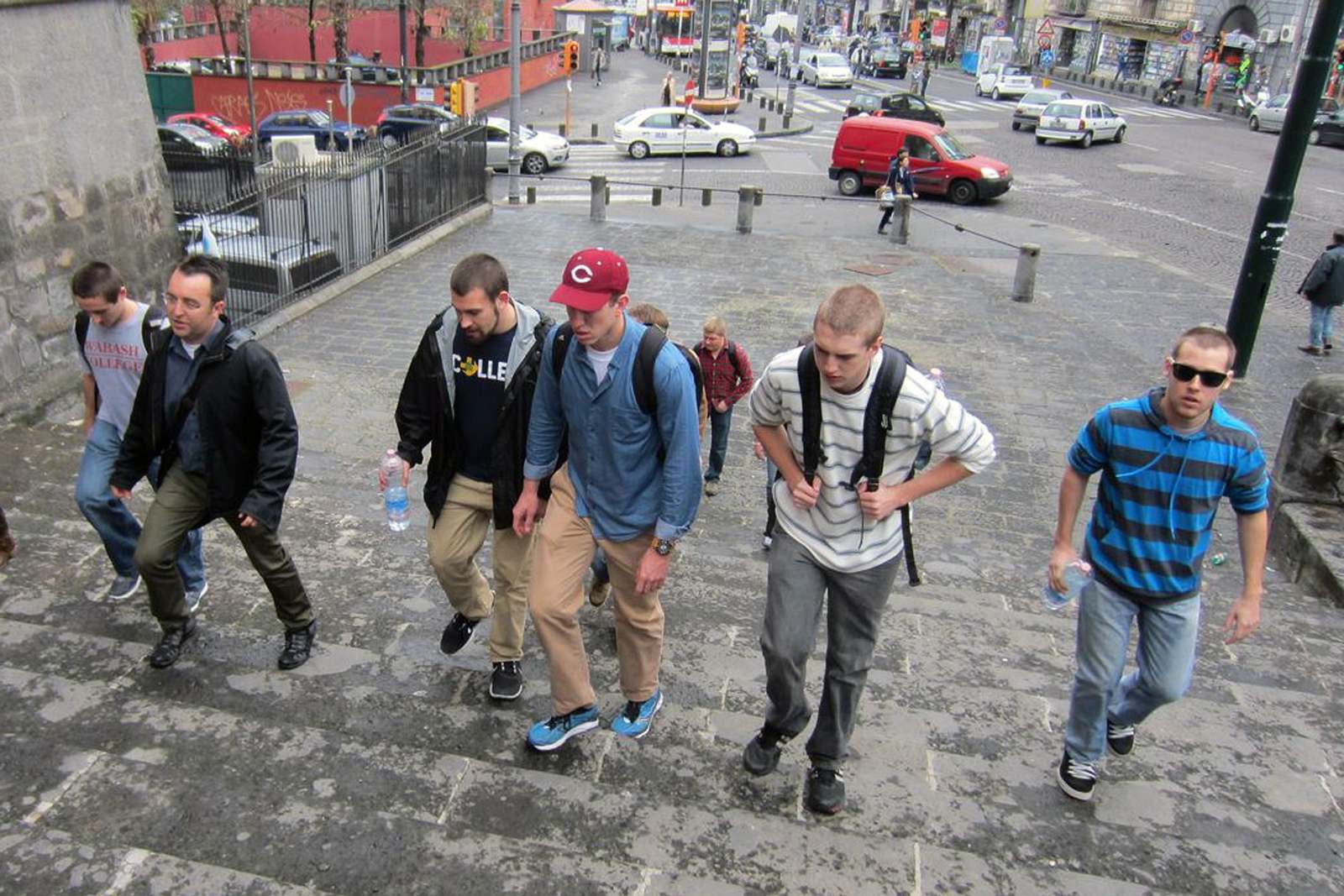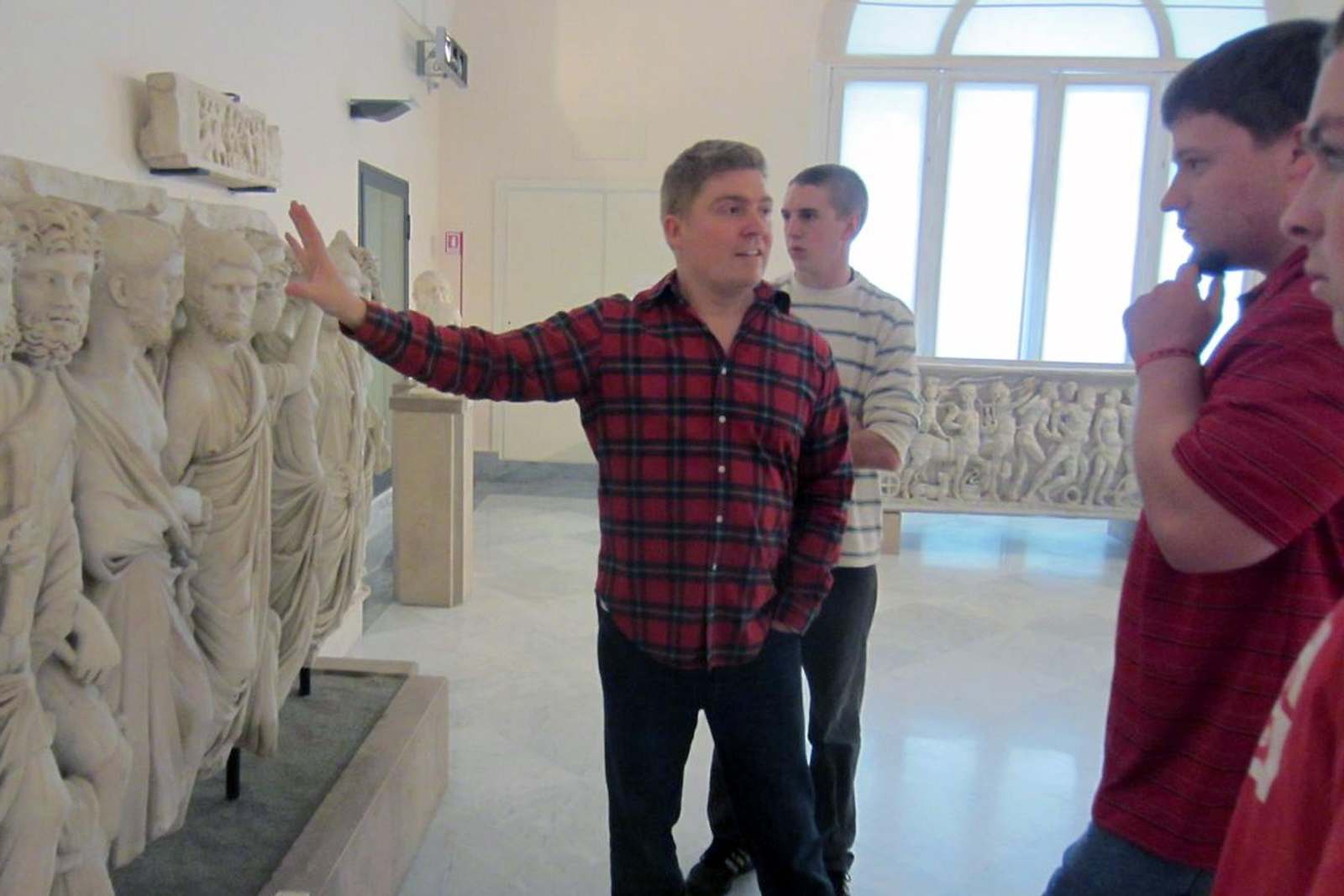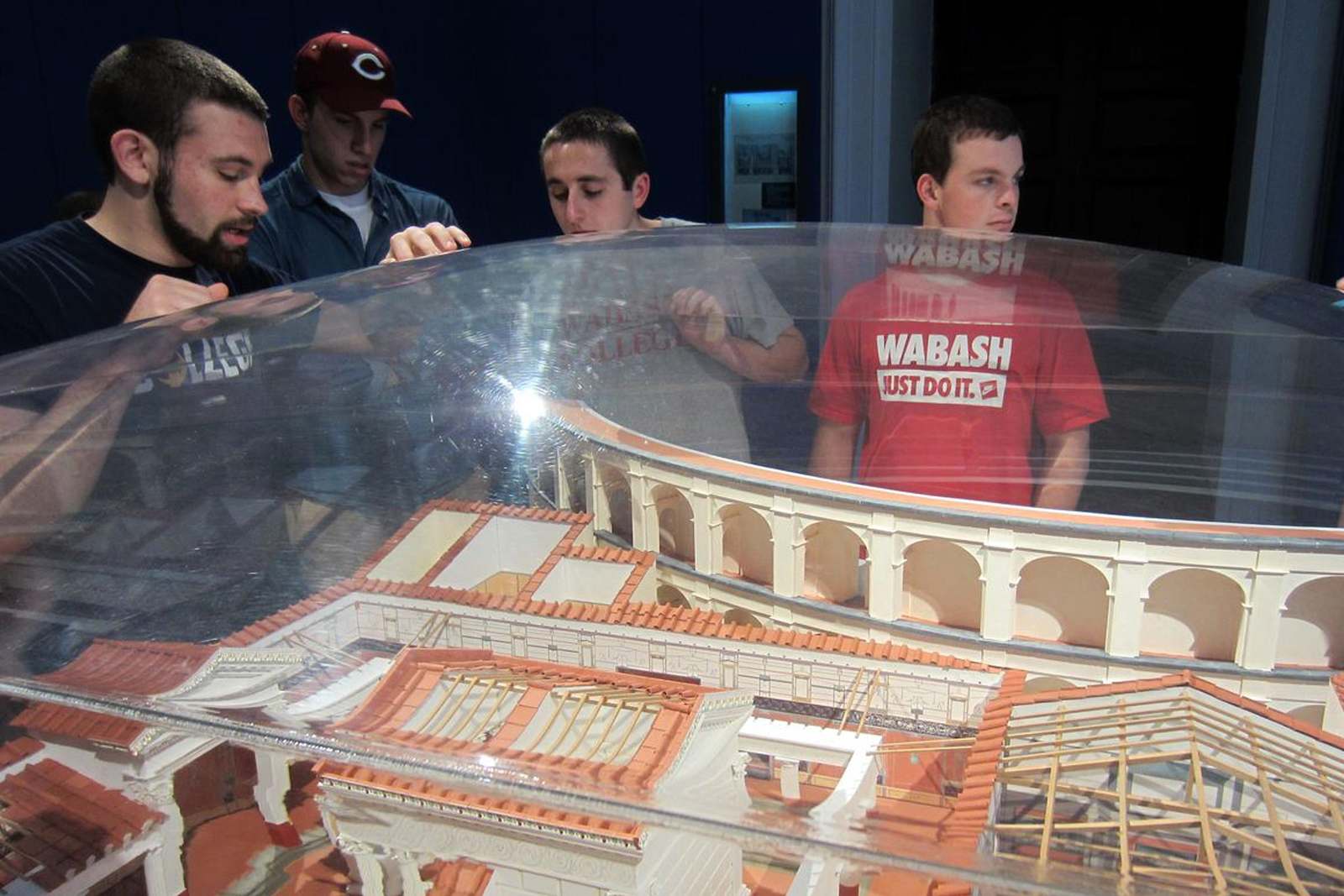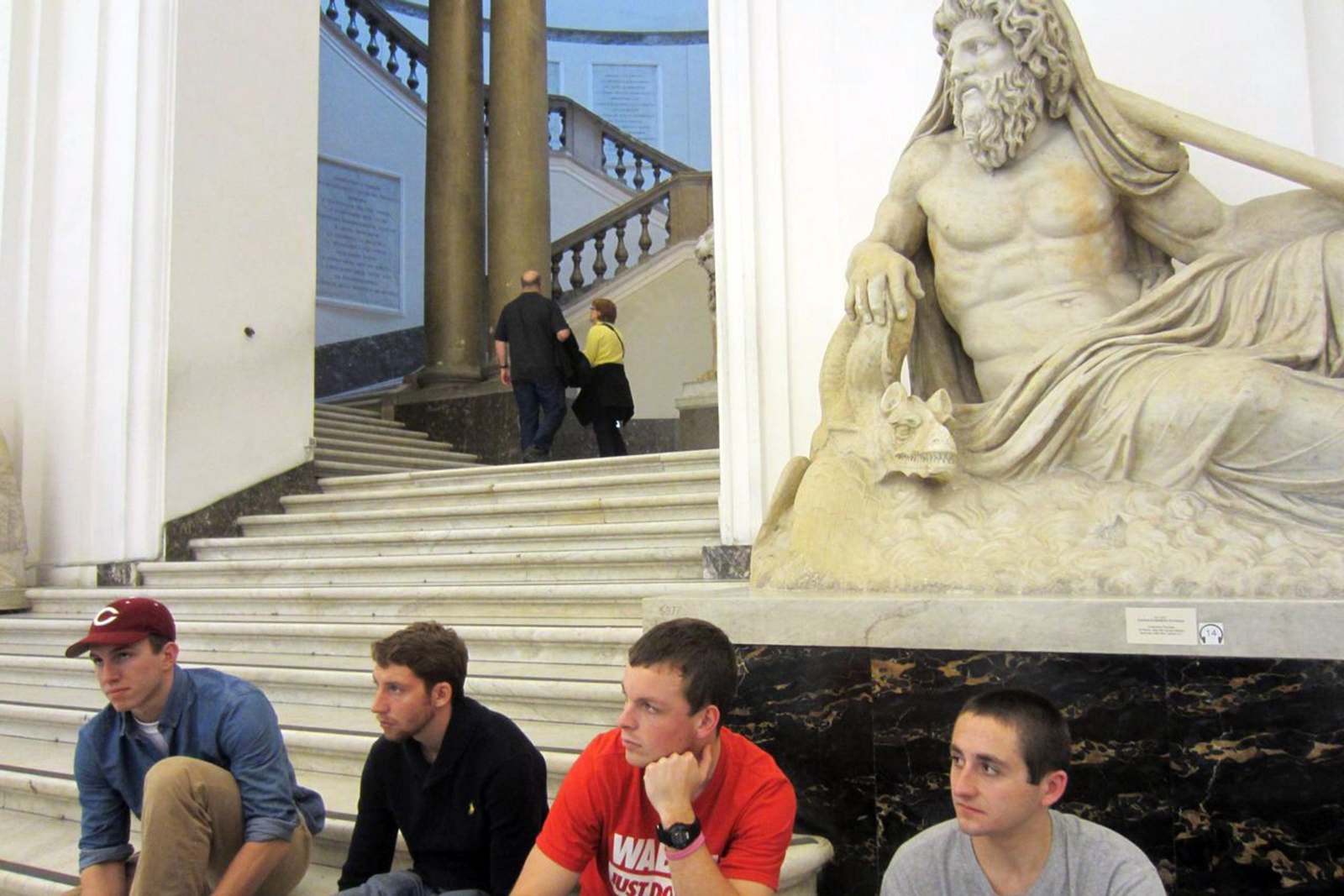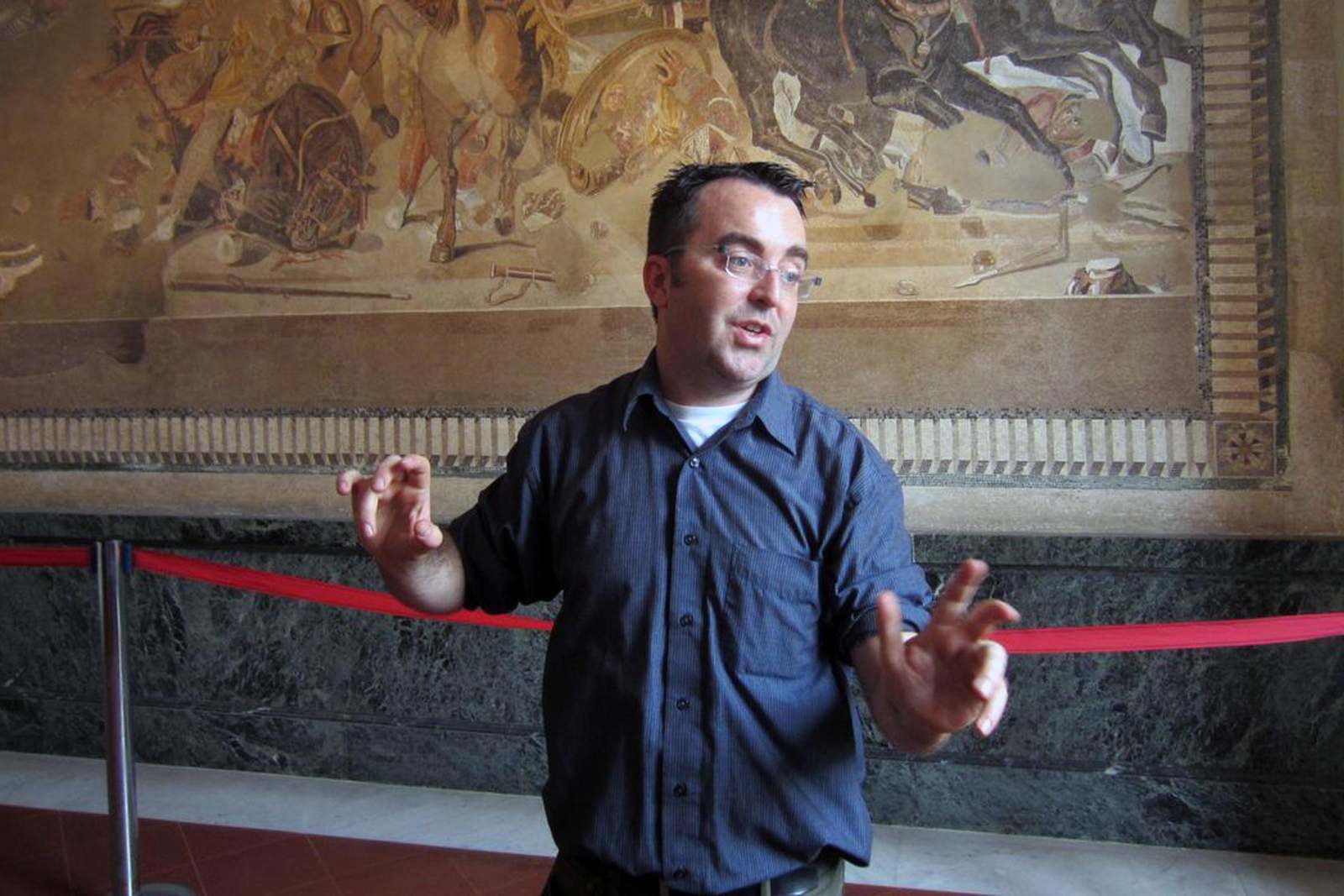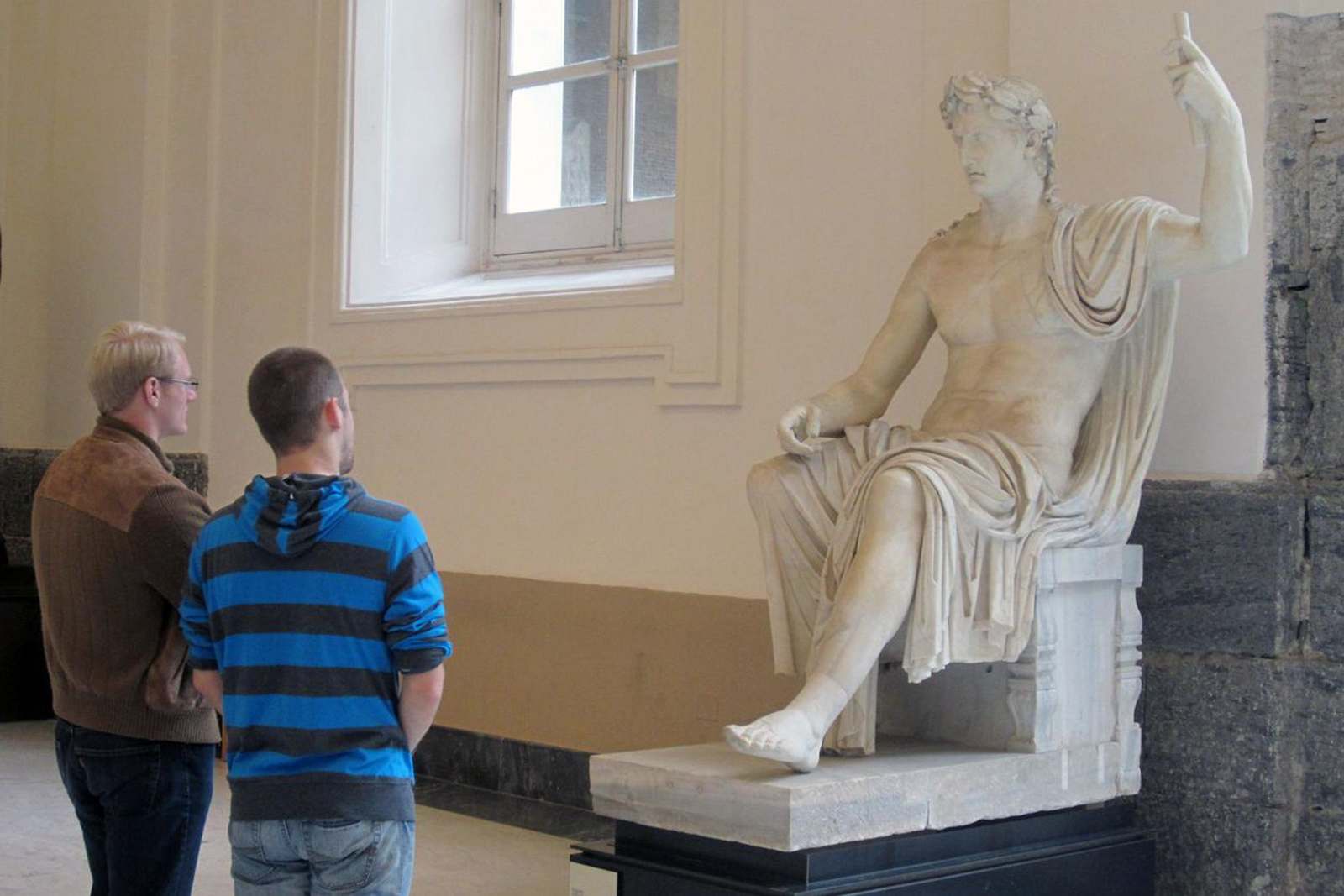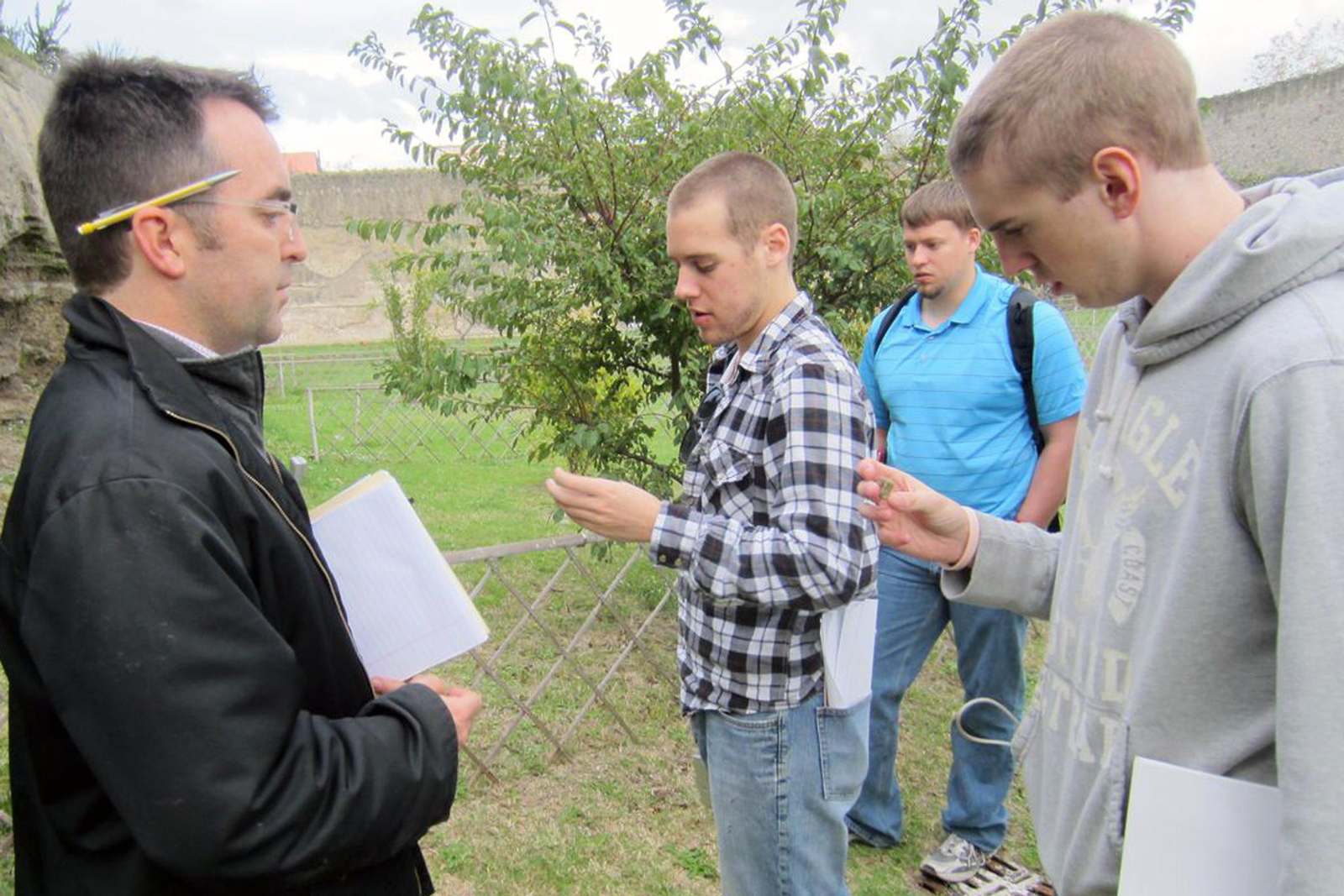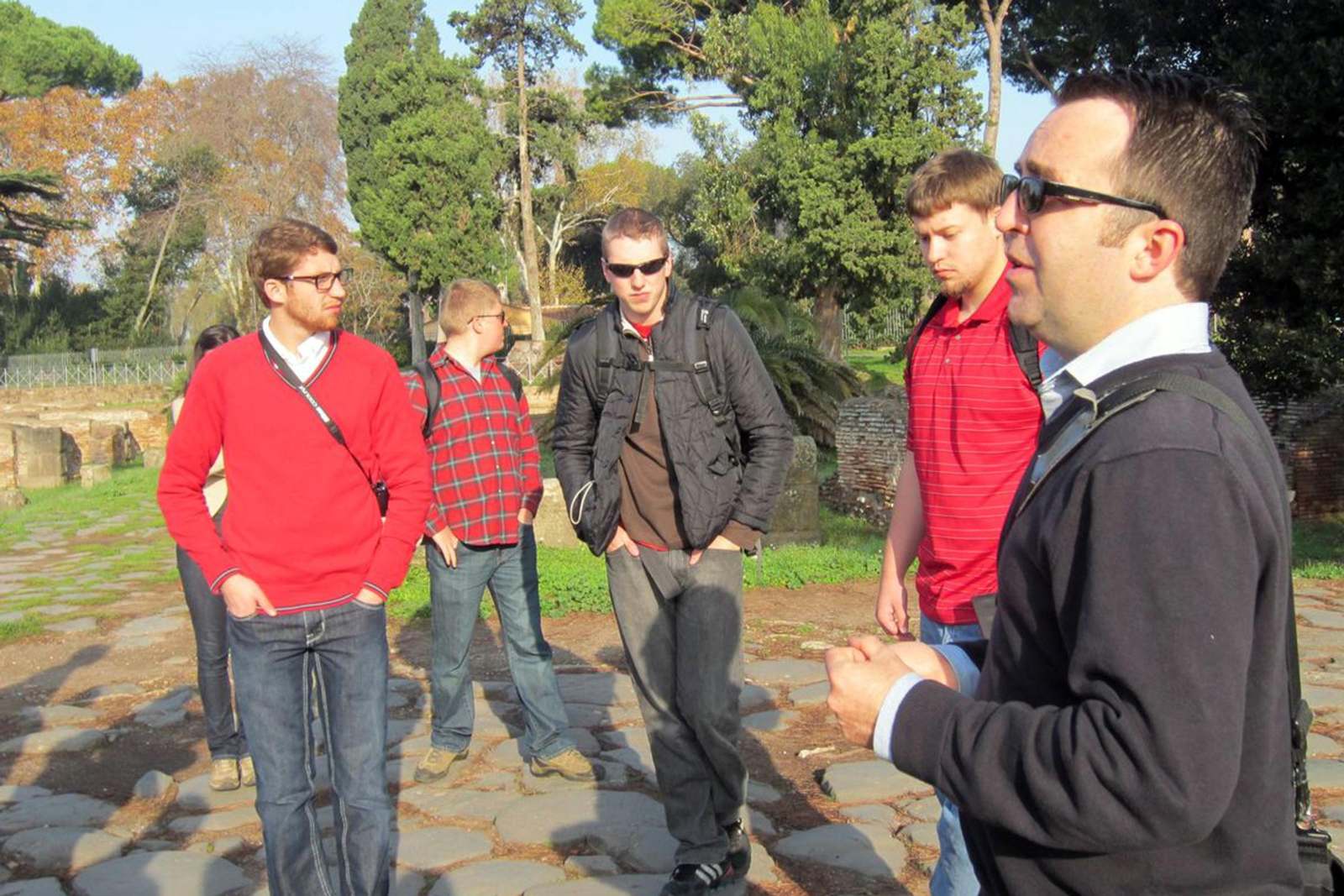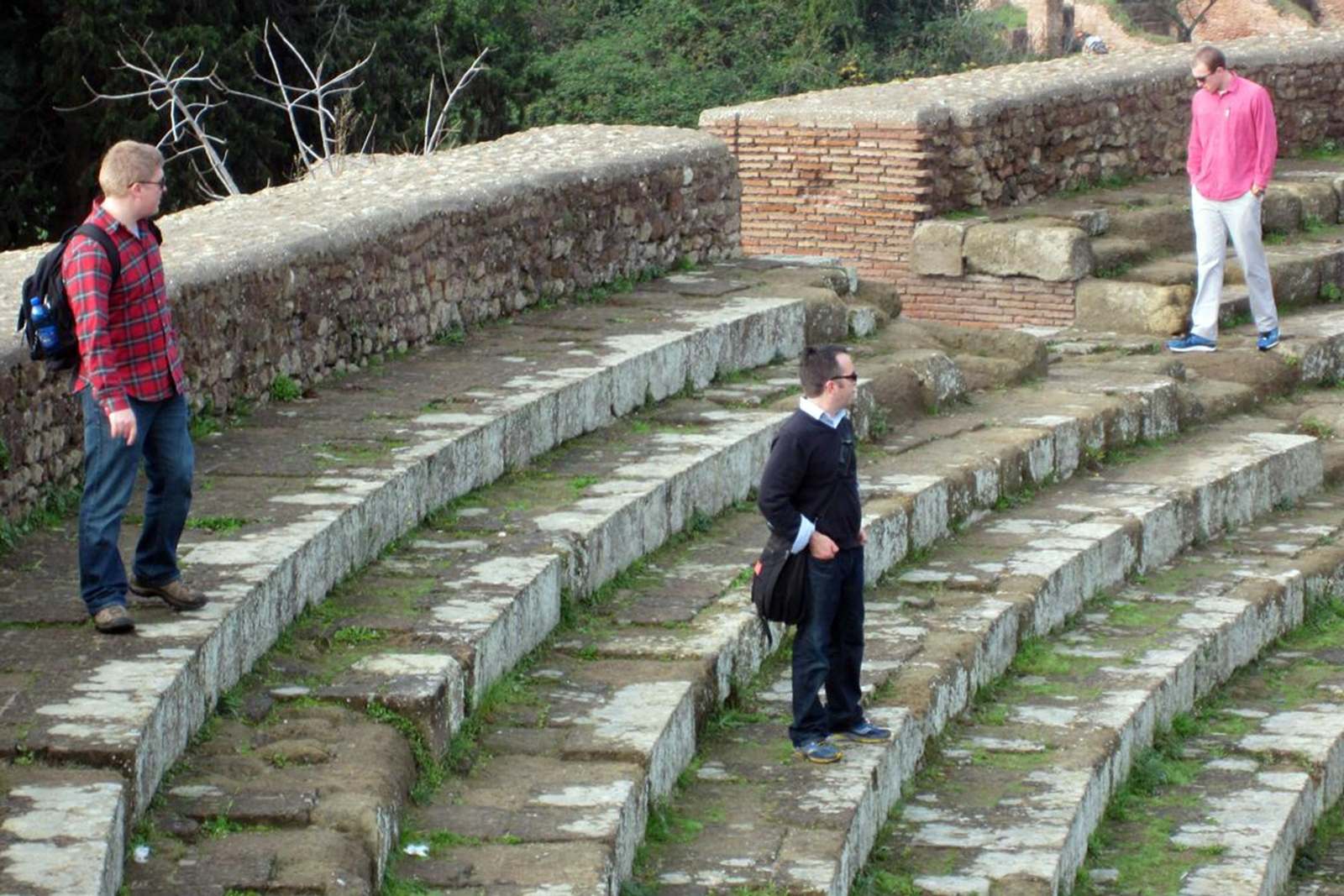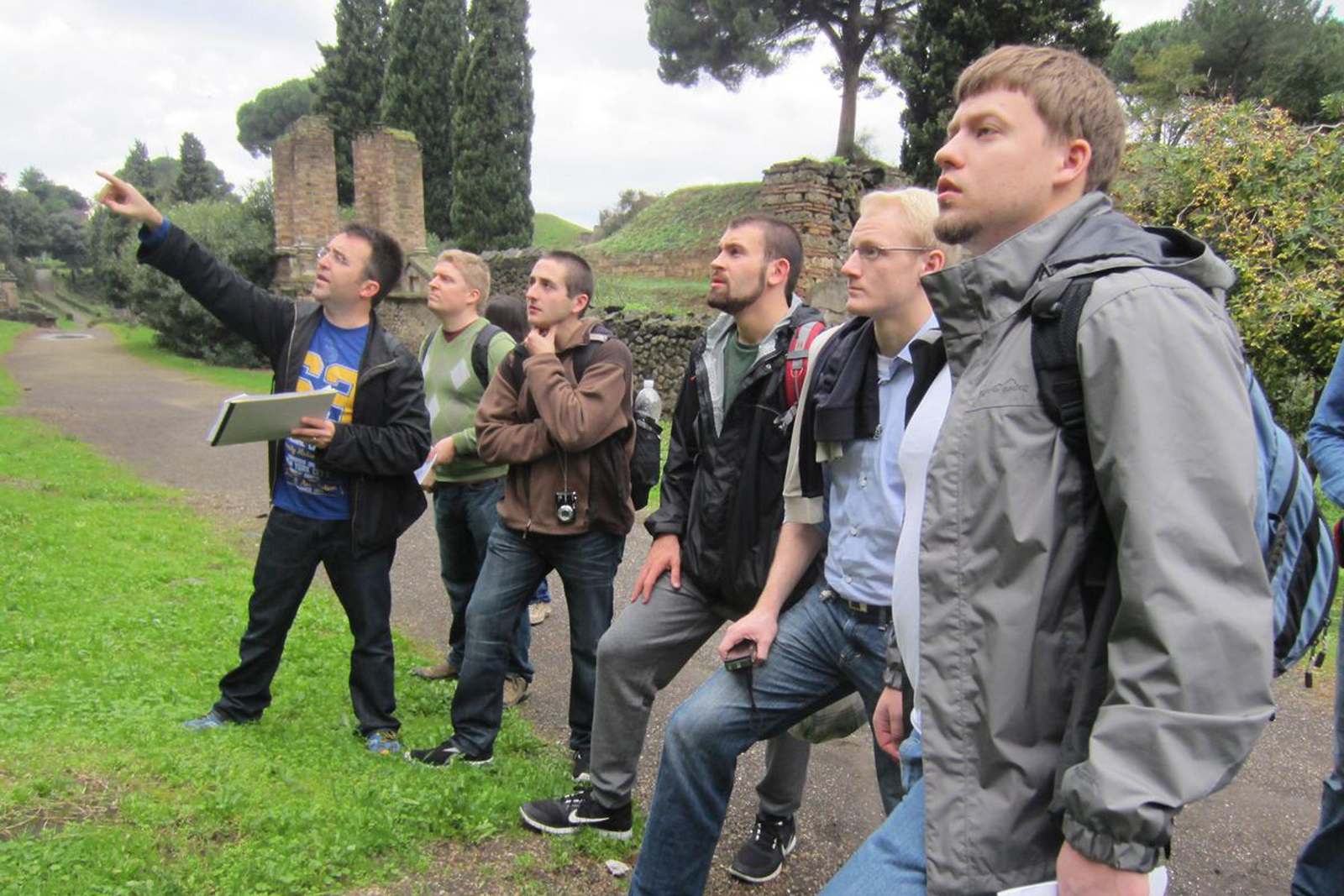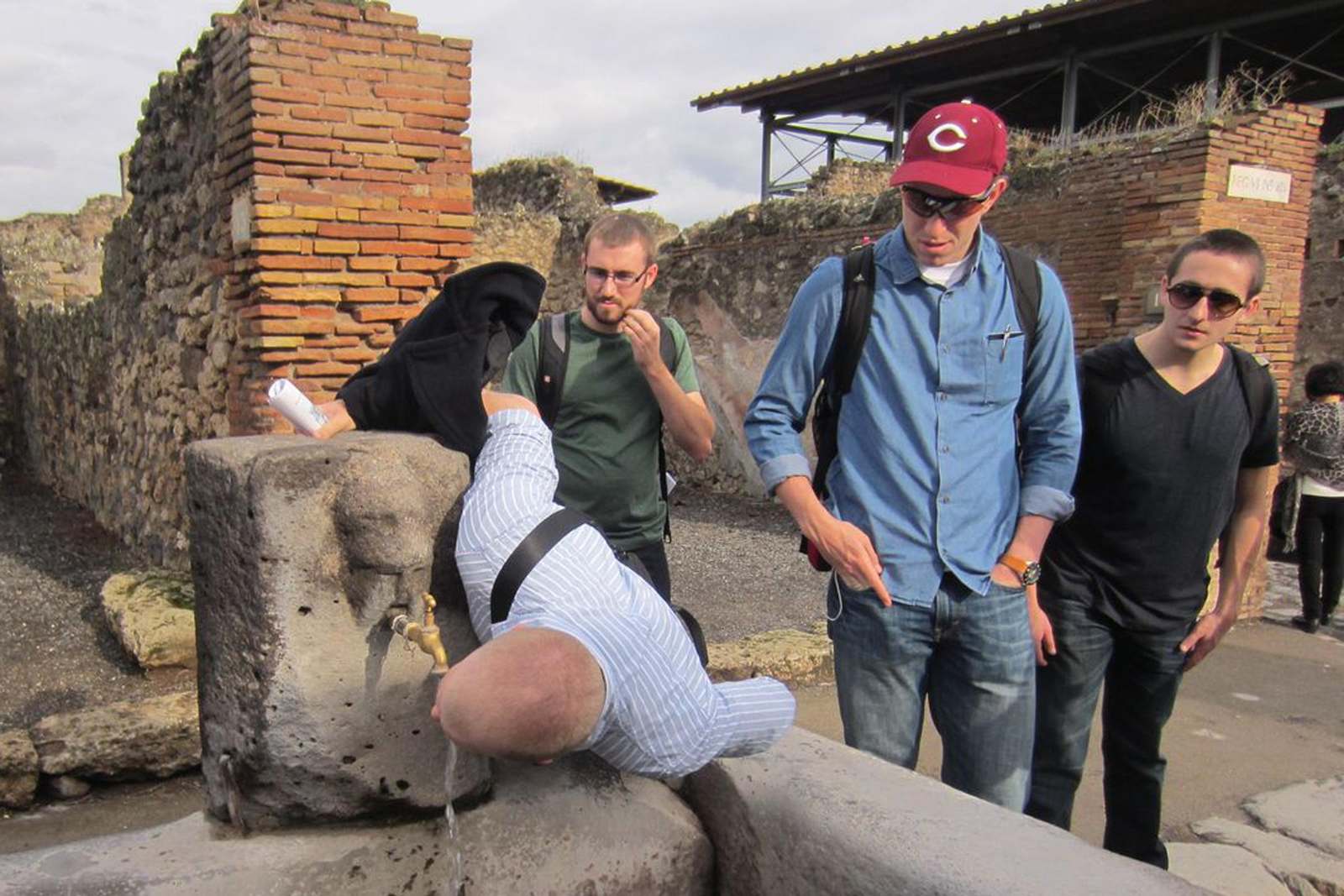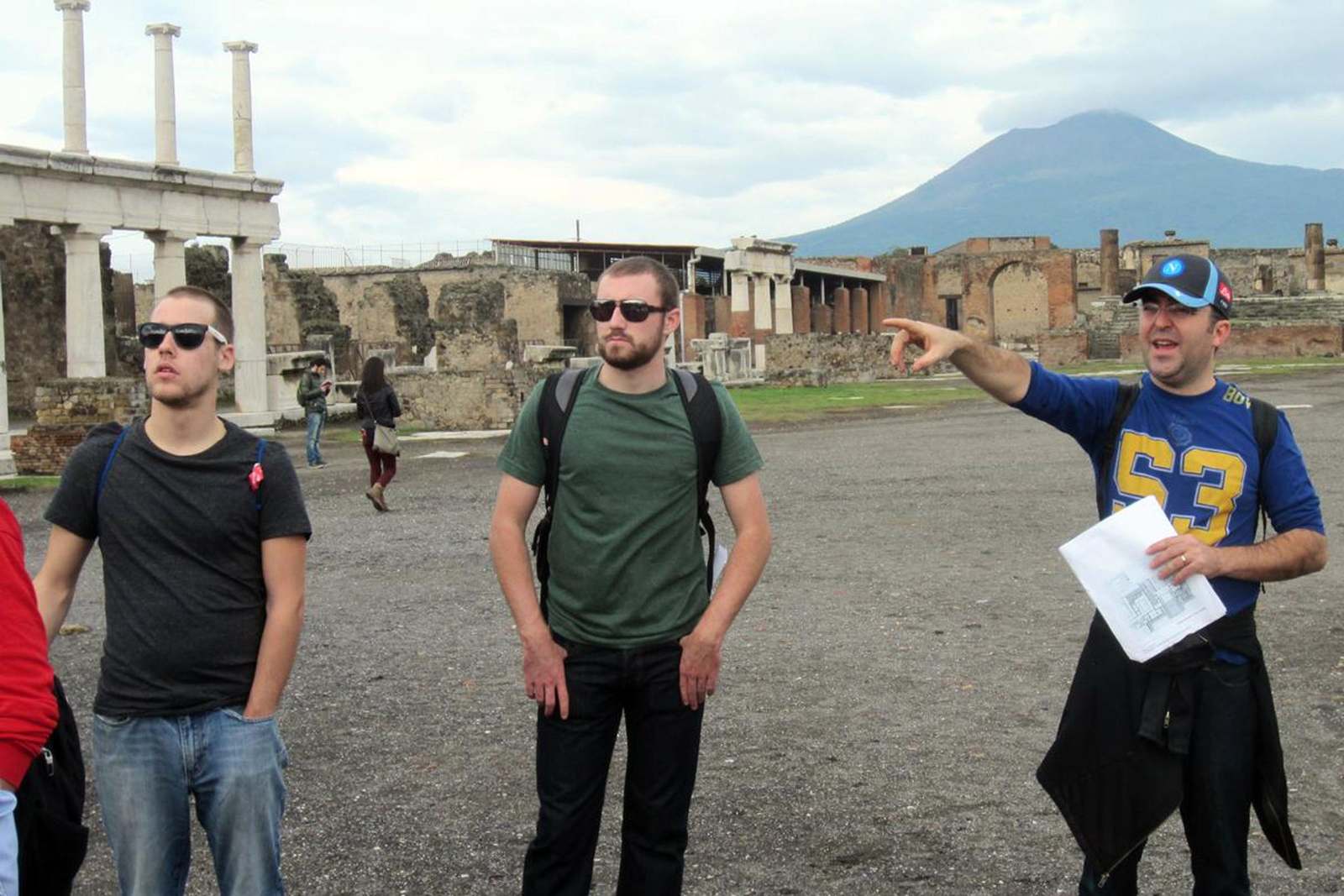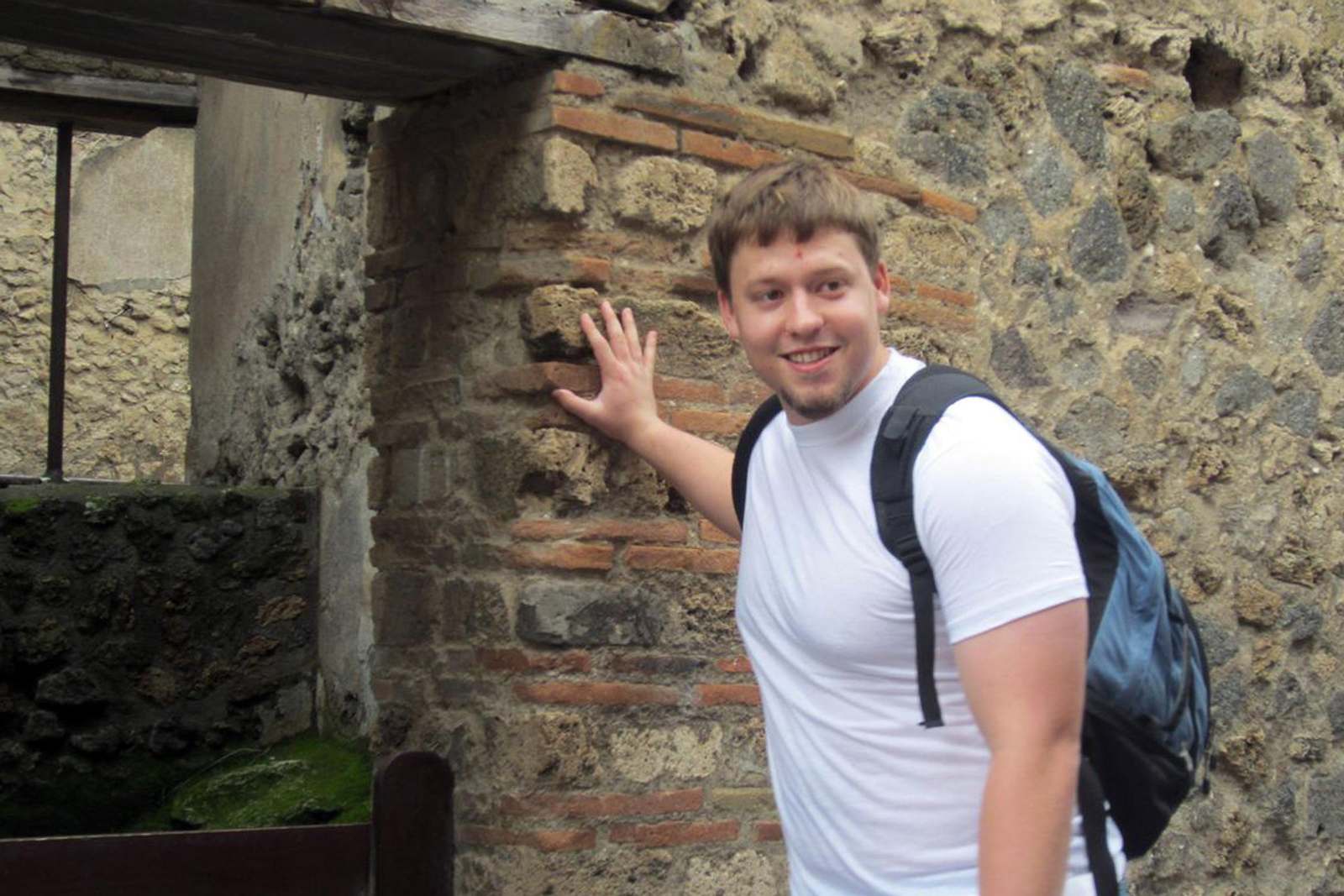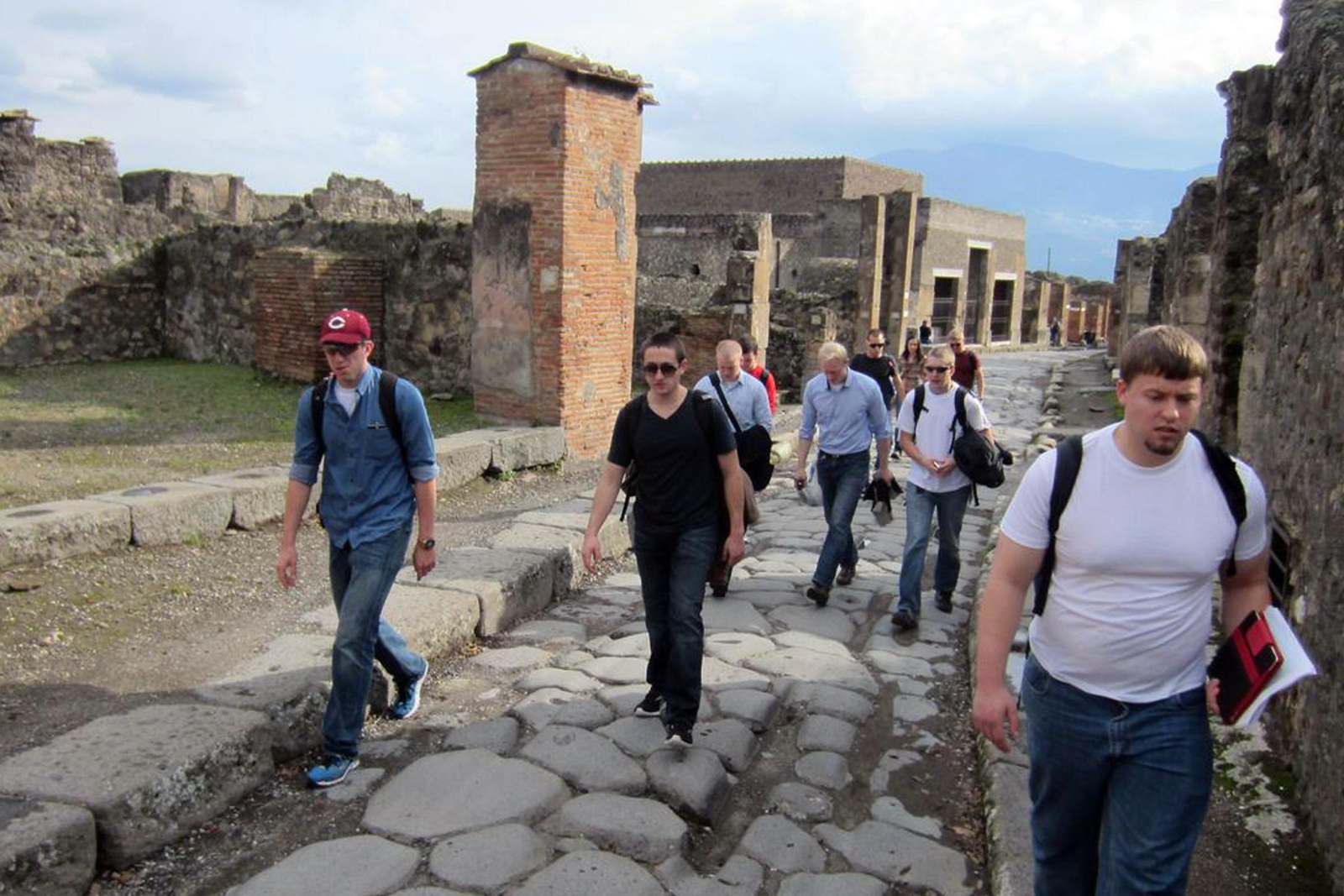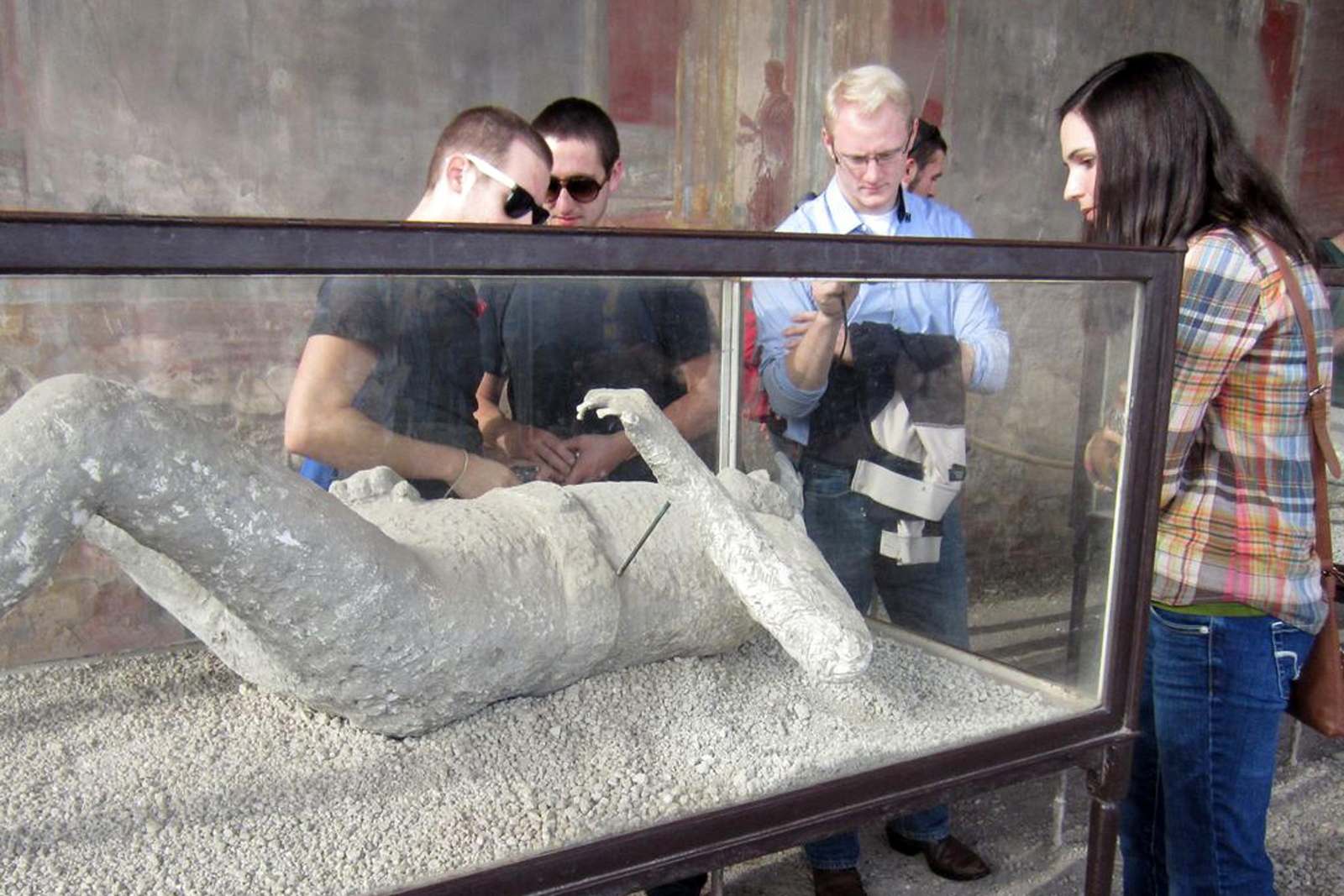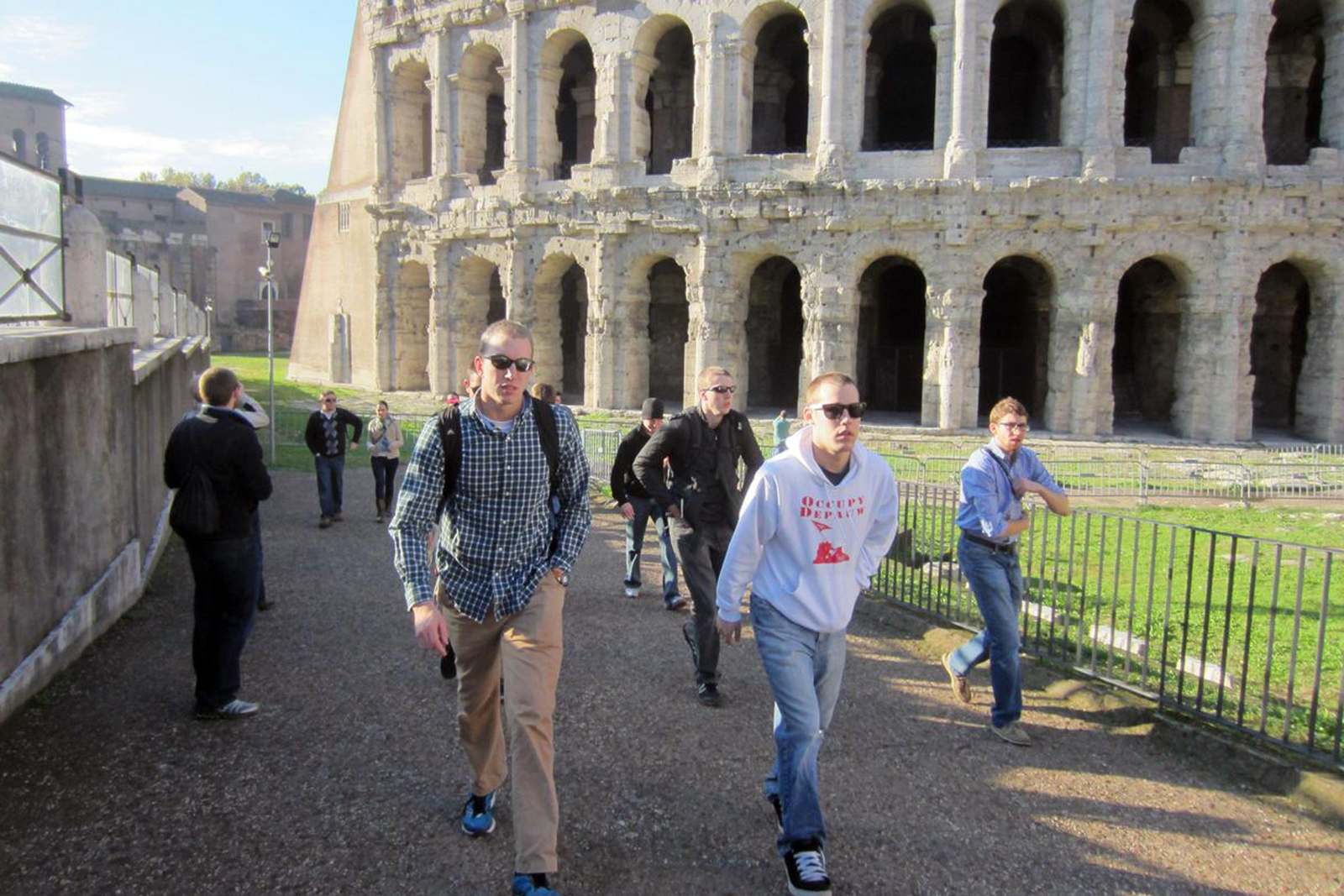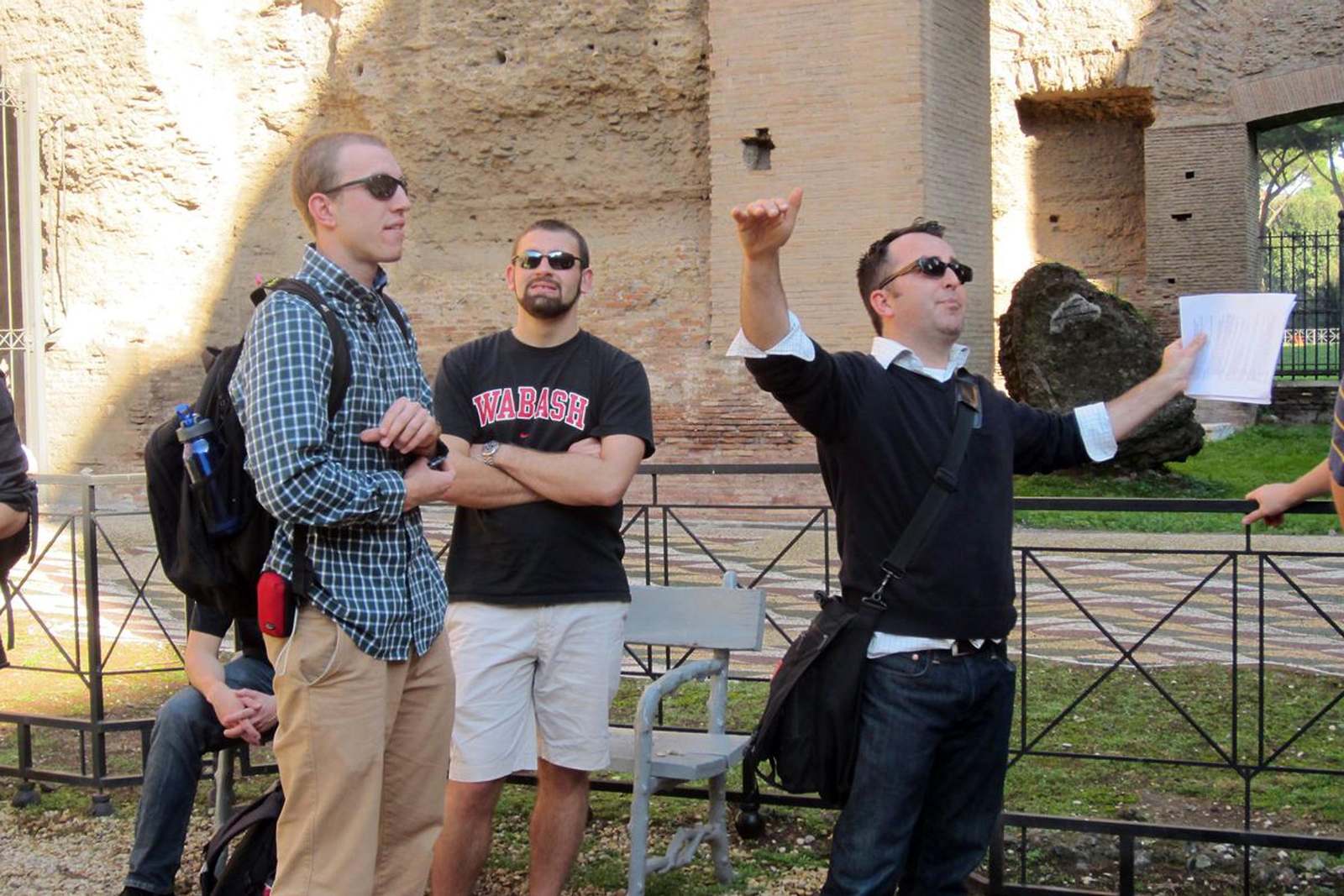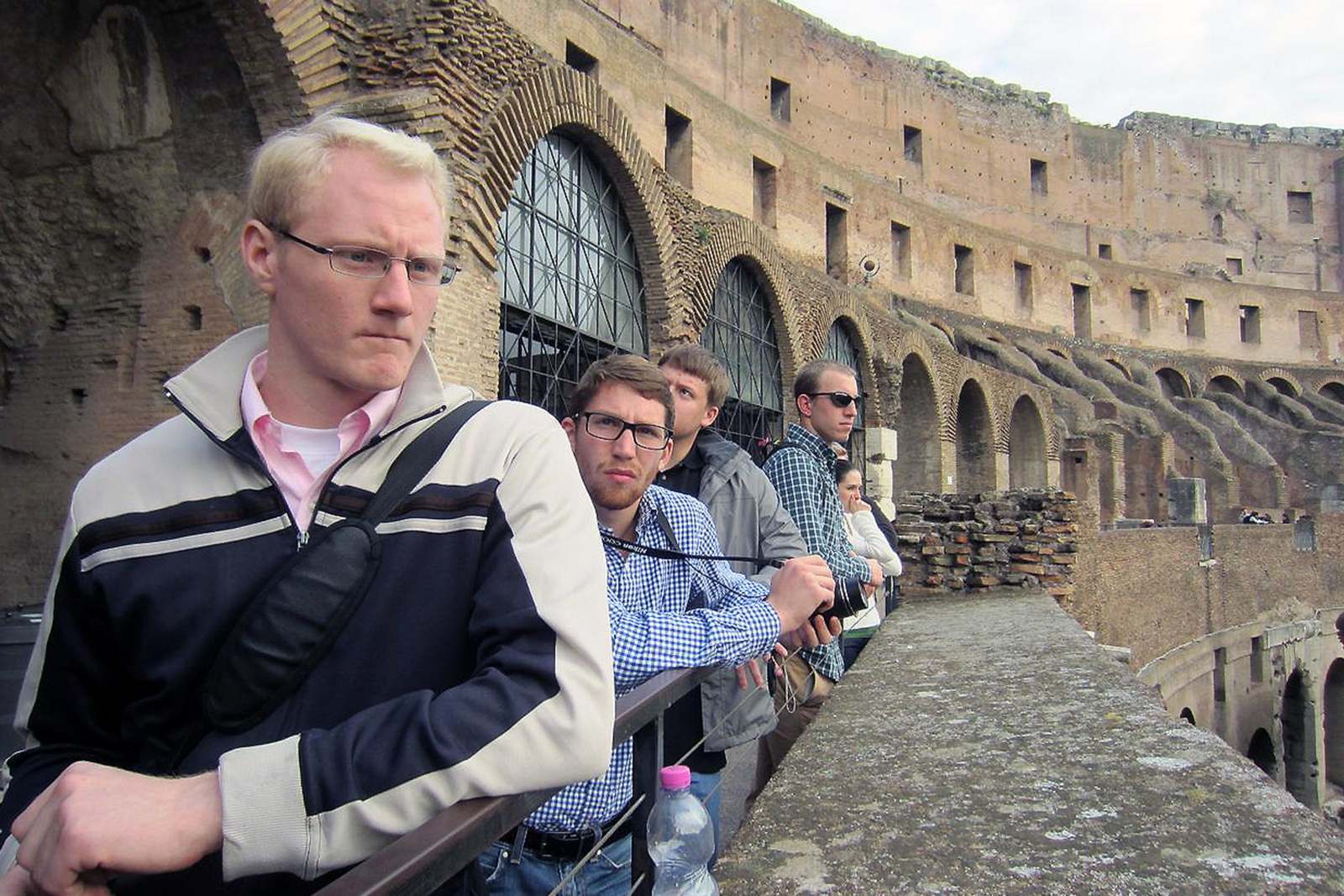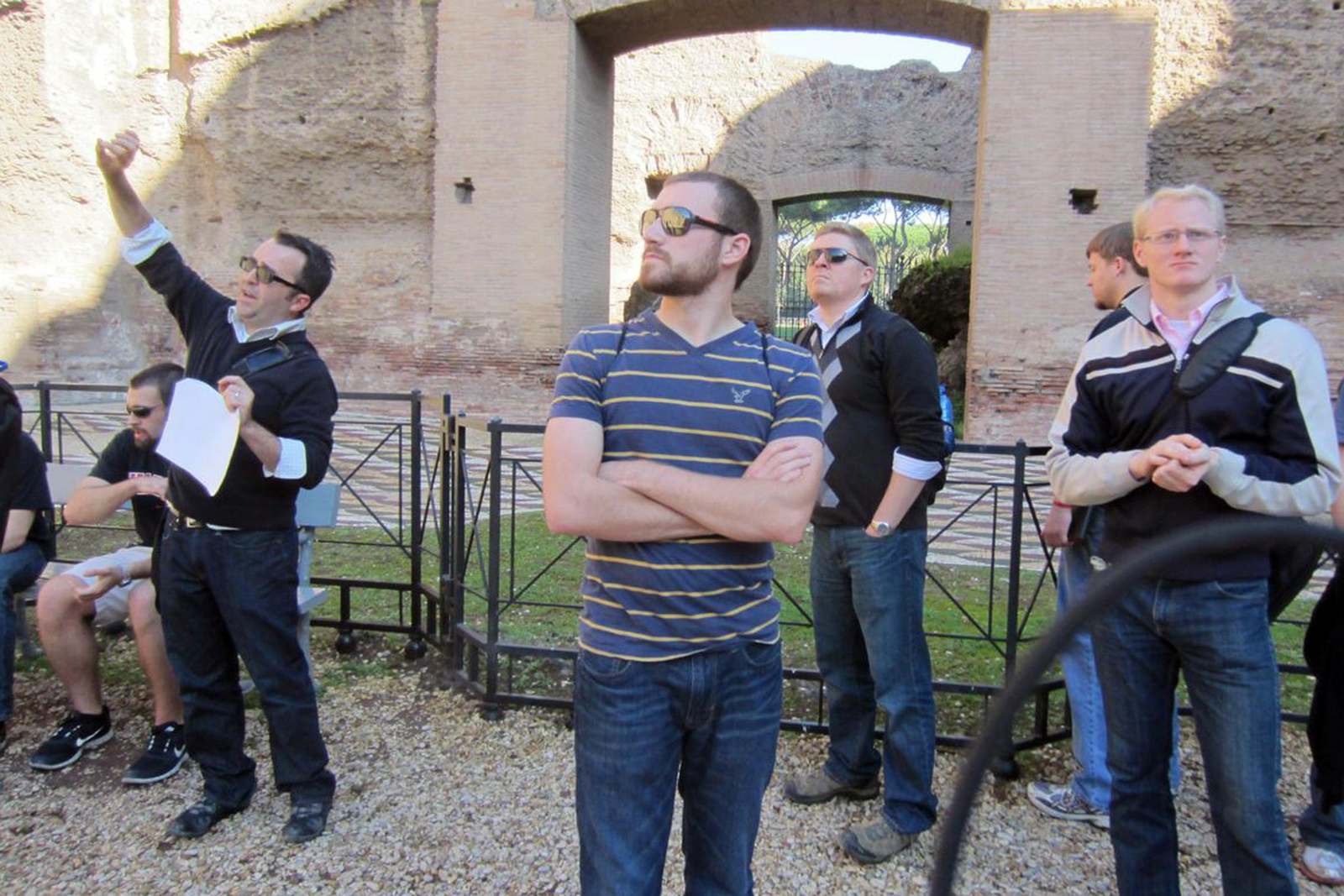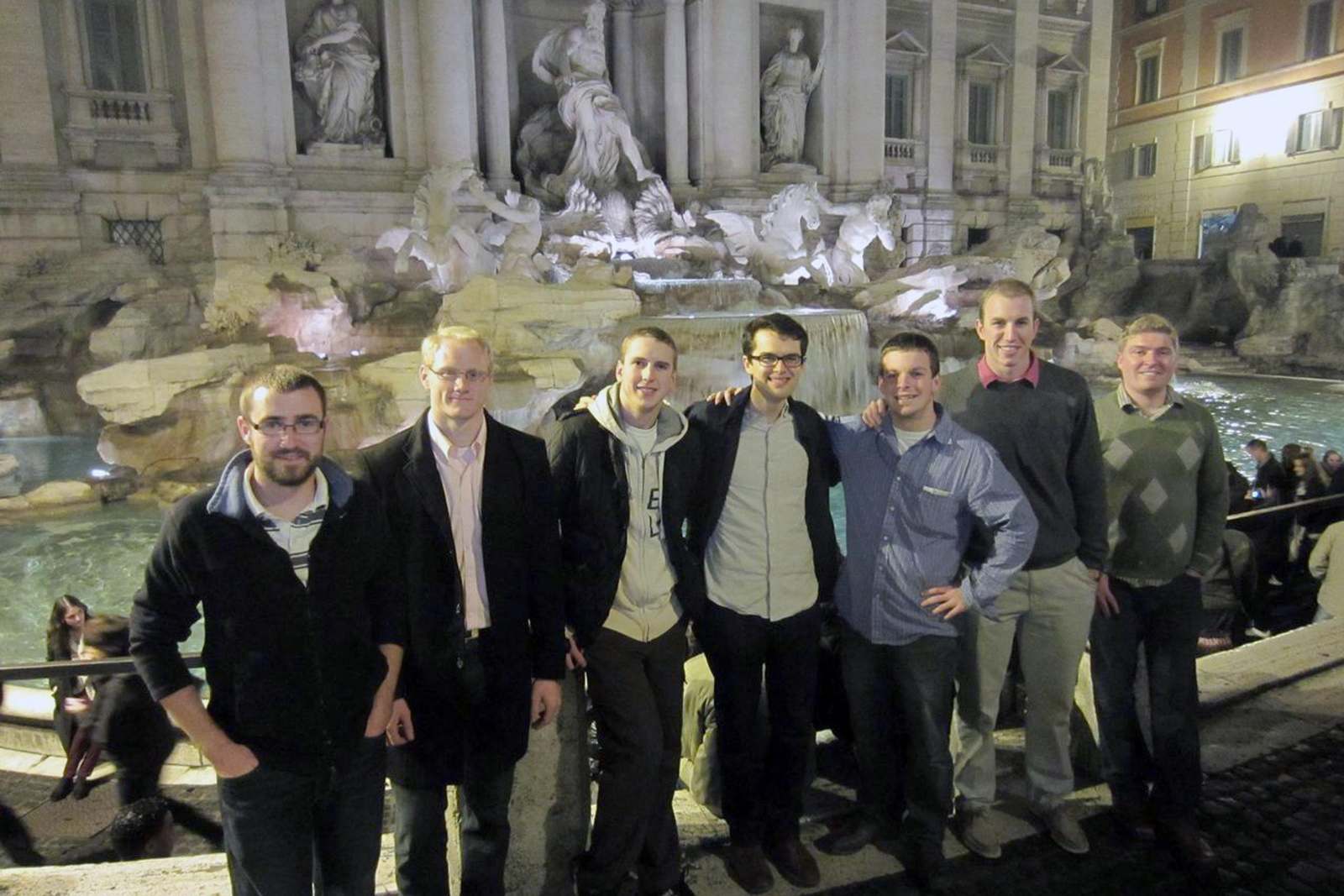Immersion 2012: Ancient Rome
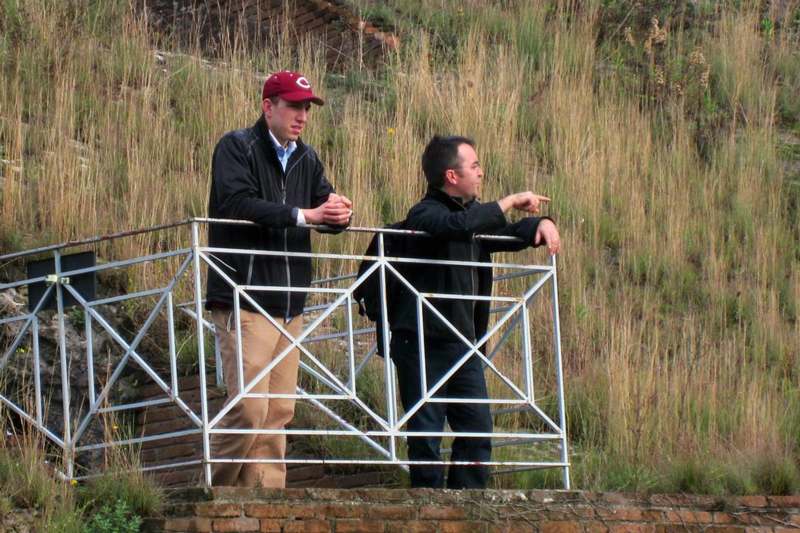
Stephen Batchelder '15 and Dr. Hartnett contemplate what would have unfolded in the amphitheater in Capua. Not only did gladiators fight, but beast hunts and executions were probably also part of the display. Students prowled through the area underneath this structure's arena, where animals would have been kept before being released into the arena.
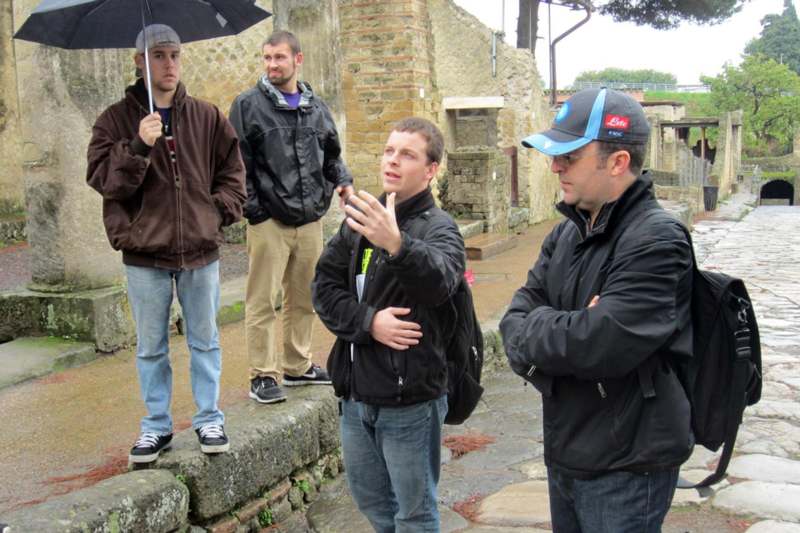
Nate Chapman '14 presents (together with Charles Hill '14 [not pictured]) the palestra at Herculaneum from the street fronting the structure. Brad Hopper '14, Jim Blaich '14, and Dr. Hartnett listen in as Chapman discusses this entertainment complex, which hosted a grand swimming pool and porticus where the city's populace could exercise.
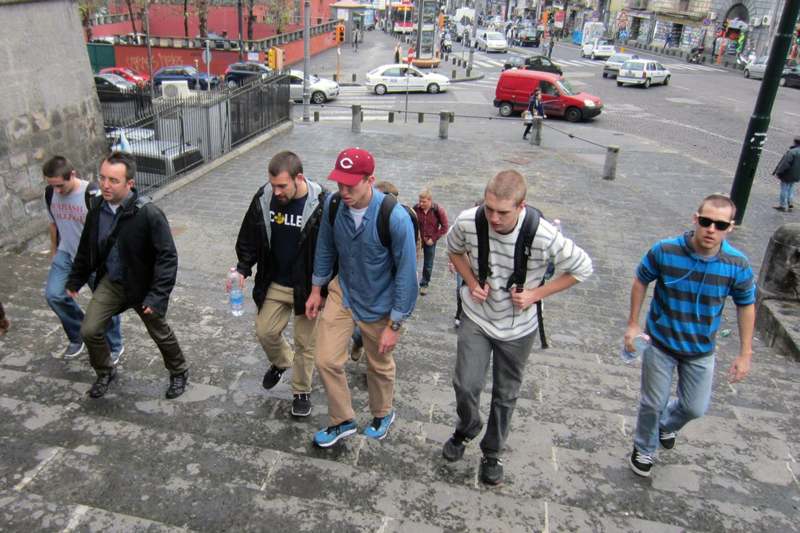
Alex Gilham '13, Dr. Hartnett, Jim Blaich '14, Stephen Batchelder '15, Josh Jones '14, and Brad Hopper '14 climb the steps to the National Archaeological Museum of Naples after a walk through downtown Naples. The museum has one of the best collections of Greco-Roman art in the world. Of special importance are objects discovered in the excavations of Pompeii and Herculaneum.
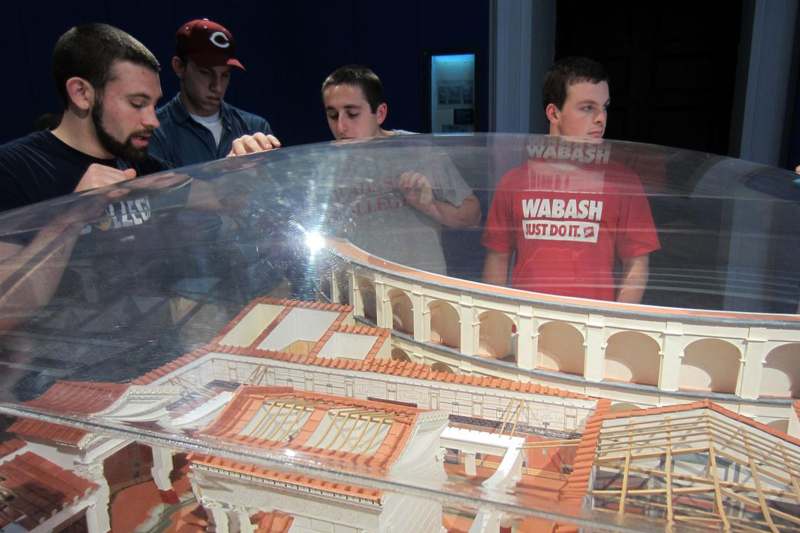
Jim Blaich '14 points out a feature of this model of Pompeii's Temple of Isis in Pompeii to Stephen Batchelder '15, Alex Gilham '13, and Nate Chapman '14 in the National Archaeological Museum of Naples. Blaich gave a presentation on the temple's architecture on-site in Pompeii, and then followed up with a discussion of its paintings in the Naples museum.
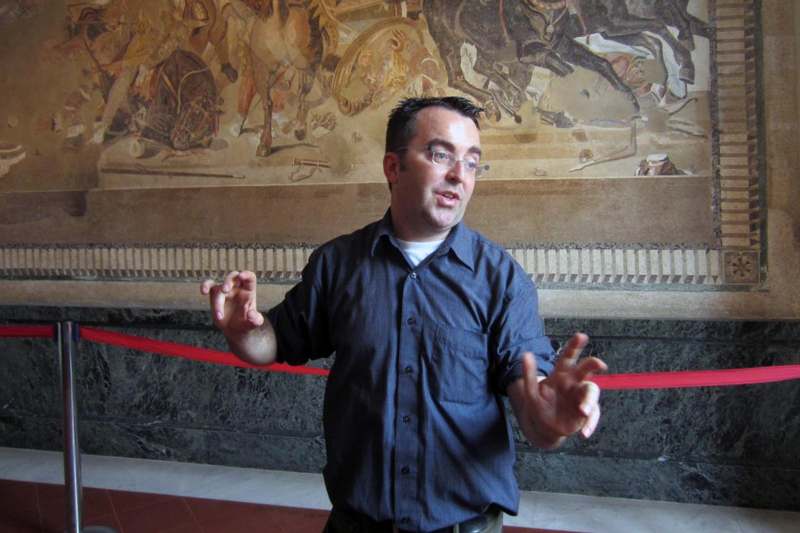
Dr. Hartnett presents the famed "Alexander Mosaic," which was found in the House of the Faun in Pompeii and is now displayed in the National Archaeological Museum of Naples. Made of several million tesserae (tiny stone pieces), it is a masterpiece of Roman artistry and illustrates some Romans' fascination with the Greek world.
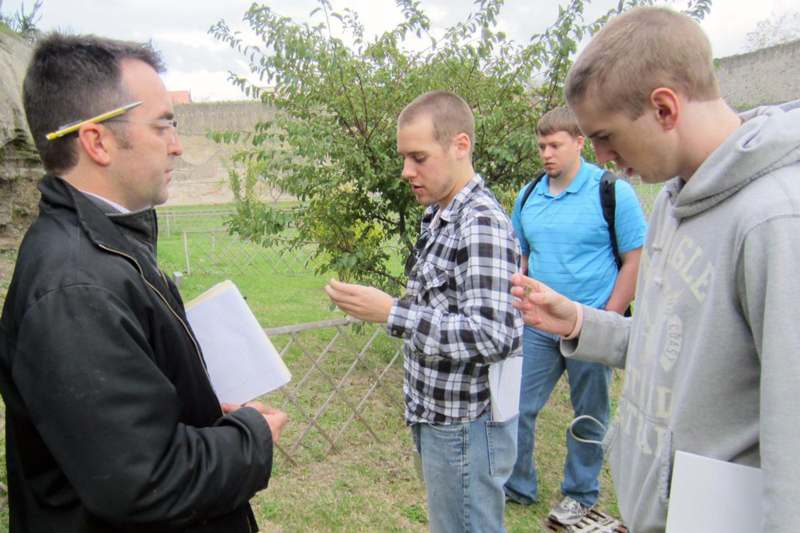
Dr. Hartnett, Brad Hopper '14, Joe Granger '13, and Josh Jones '14 examine pieces of pumice left from the eruption of Mt. Vesuvius in AD 79, which covered the so-called Villa of Poppaea at Oplontis, near Pompeii. The group went straight from the airport to this first show-stopping site, then on to Pompeii.
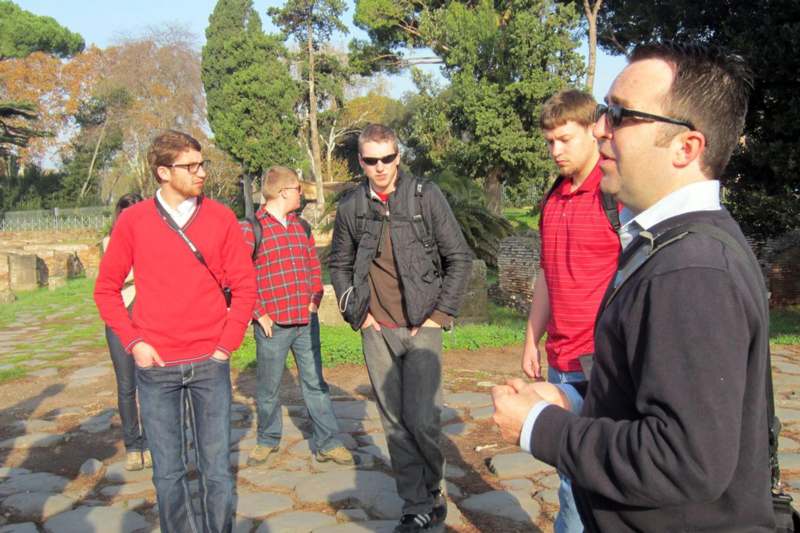
The weather improved markedly near Rome. Here, Jacob Ponton '14, Dr. Sears, Josh Jones '14, and Joe Granger '13 listen to Dr. Hartnett introduce Ostia, Rome's ancient port, a city whose population mushroomed to service the port. They stand just outside the city gate along the Via Roma. By contrast with Pompeii, Oplontis, and Herculaneum, Ostia was not destroyed in a cataclysm, but slowly depopulated as the port was silted.
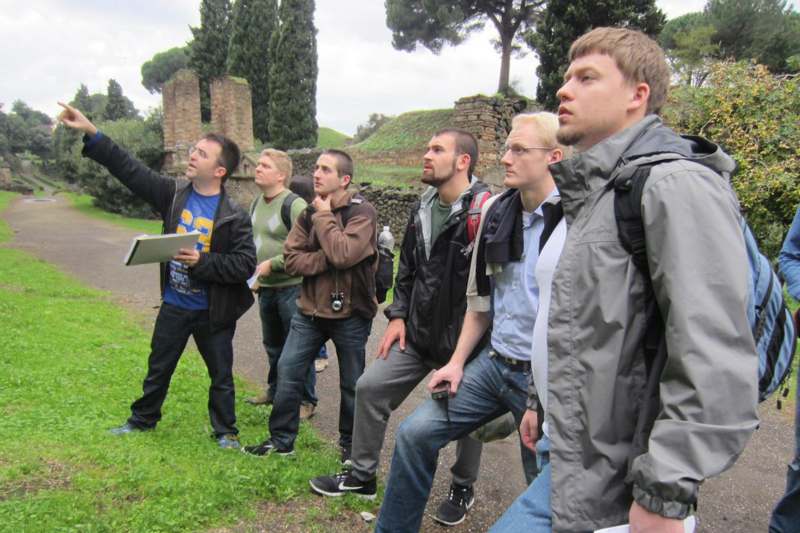
Dr. Hartnett gets things started on the first morning in Pompeii by discussing the city's necropolis. Dr. Sears, Alex Gilham '13, Jim Blaich '14, Wes Adams '14, and Joe Granger '13 learn about Roman funerary architecture and commemorative practices outside the city's walls, in the "city of the dead." (Note the clothes: the group's luggage didn't arrive with them, so several Wallies are sporting Euro-gear purchased from a nearby store.)
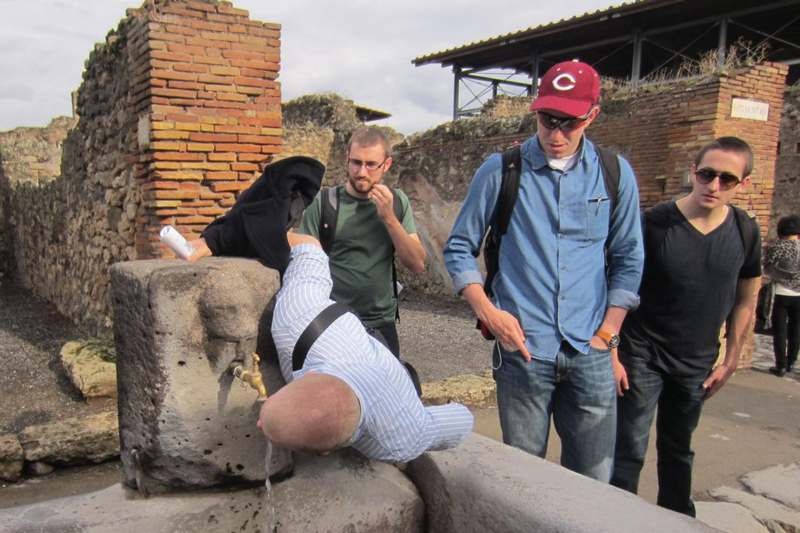
Eddie Pingel '15 takes a drink from one of Pompeii's fountains while Charles Hill '14, Stephen Batchelder '15, and Alex Gilham '13 look on. Though the plumbing is new, the fountains remain from ancient times and were spread throughout the city. They were likely meeting points and thus social hotspots for many Pompeians.
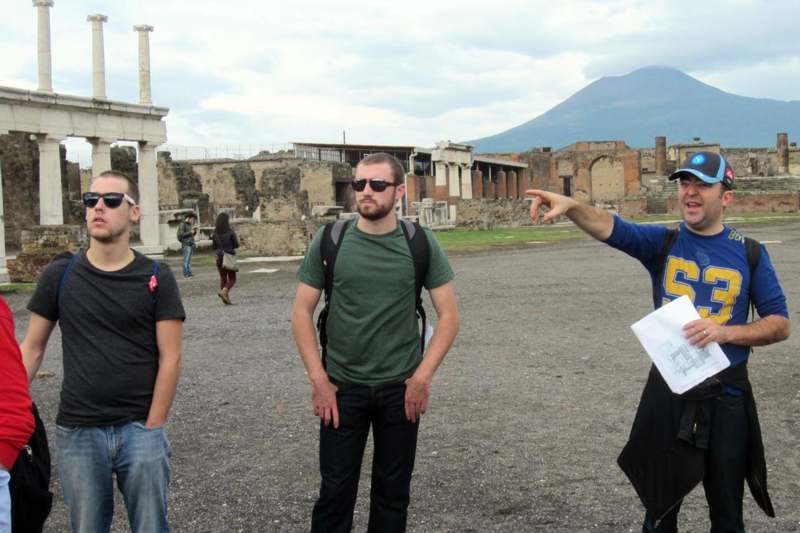
With Mt. Vesuvius looming in the background, Brad Hopper '14 and Charles Hill '14 listen to Dr. Hartnett talk about civic buildings in the Pompeii's forum. This civic and religious heart of the city also served as a major commercial hub, and would have especially buzzed with activity on market days.
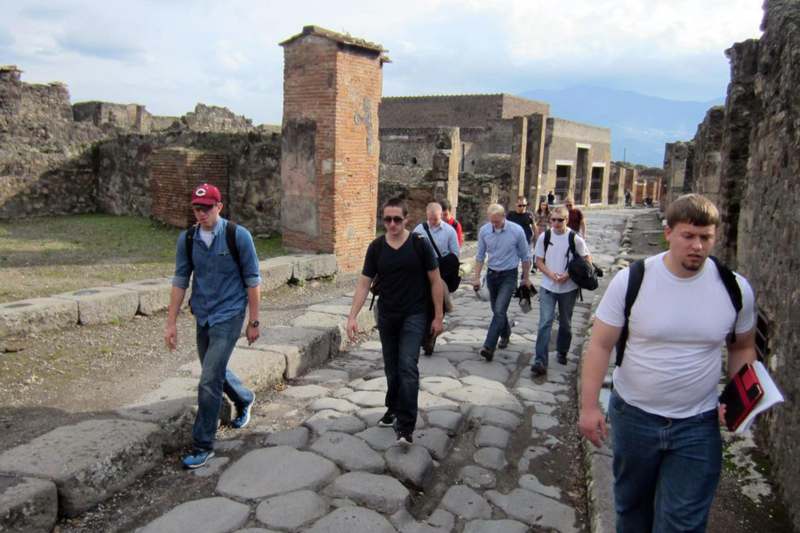
Stephen Batchelder '15, Alex Gilham '13, Eddie Pingel '15, Wes Adams '14, Josh Jones '14, and Joe Granger '13 walk down the Via Consulare in Pompeii. In Roman times, you would have wanted to use on the two sidewalks, since the street often doubled as a sewer and hosted much traffic. Visible in the roadbed are "ruts" left by the continual passing of metal-rimmed cart and wagon wheels.
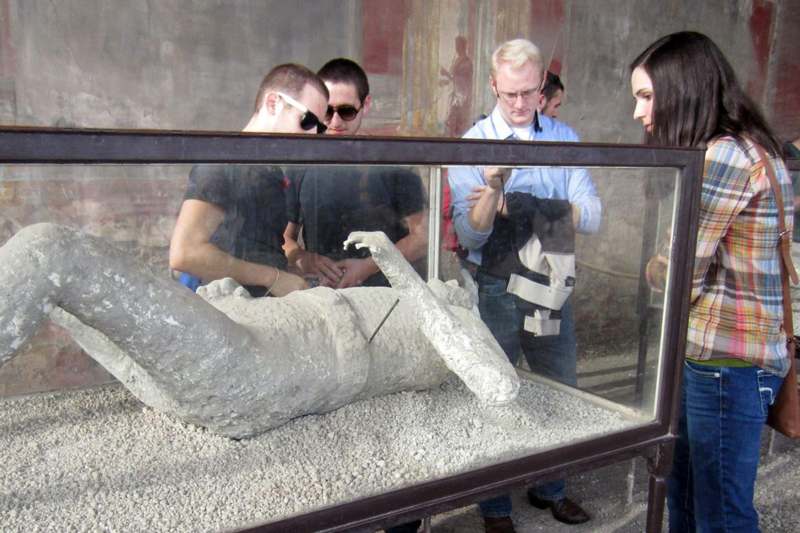
Brad Hopper '14, Alex Gilham '13, Wes Adams '14, and Jenny Sears examine one of the plasters casts of Vesuvius' victims in Pompeii's Macellum. When Mt. Vesuvius erupted, the ash covered and solidified over bodies. The bodies decomposed but the spaces remained. The casts were formed by pouring plaster into the spaces and then excavating away the surrounding ash. This would have been his pose as toxic gases filled his lungs and suffocated him.
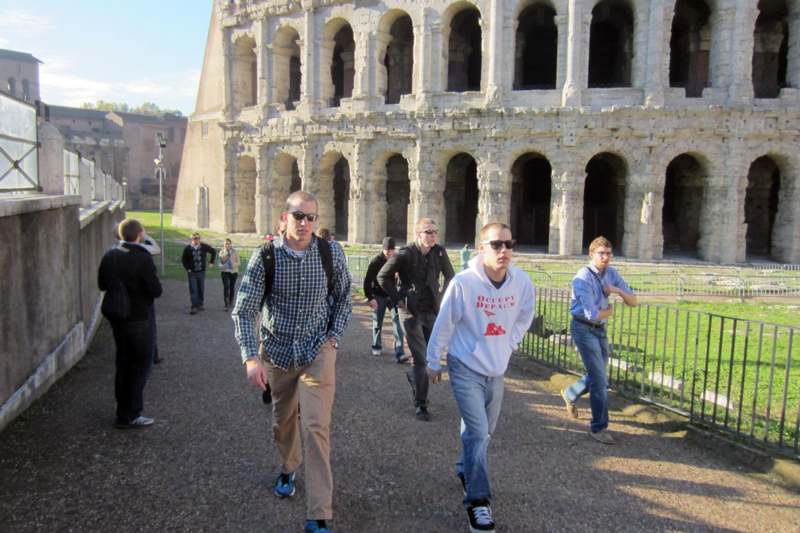
On the first day in Rome, the group traced the route of the Roman triumph, a parade in honor of a victorious general. Here Stephen Batchelder '15, Josh Jones '14, Brad Hopper '14, and Jacob Ponton '14 leave the Theatre of Marcellus in Rome, a project started, but not completed, by Julius Caesar. If it looks familiar, that's because its combination of arches and engaged columns inspired the Colosseum.
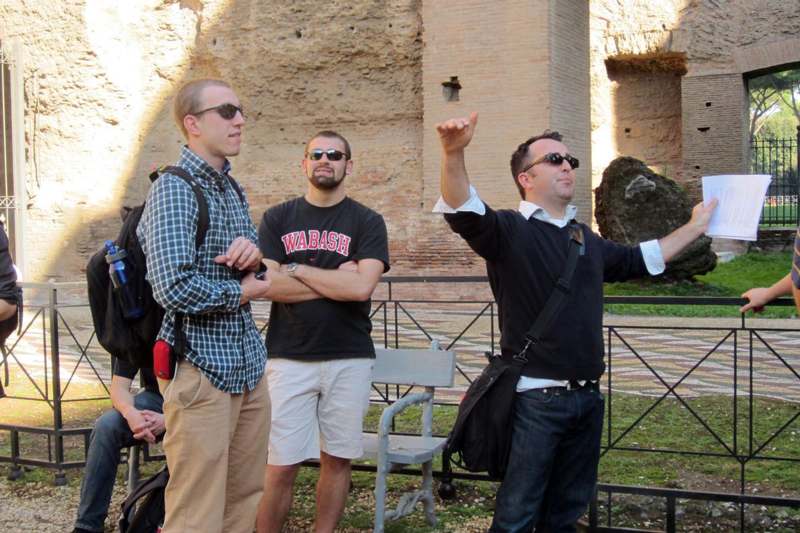
The Baths of Caracalla in Rome were massive, covering 33 acres and requiring an army of slaves to keep it heated and staffed. The class debated whether this environment, where everyone from slave to senator mixed in the nude, was an egalitarian one that threatened social boundaries. Here Stephen Batchelder '15 and Jim Blaich '14 listen to Dr. Hartnett discuss the building's architecture, which inspired the first Penn Station in New York.
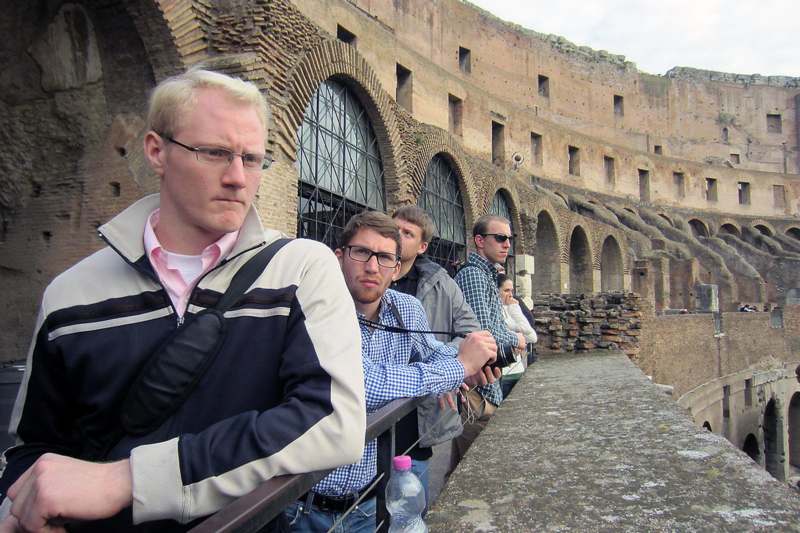
Wes Adams '14, Jacob Ponton '14, Joe Granger '13, and Stephen Batchelder '15 look around the Flavian Amphitheater (aka the Colosseum) from one of its top levels. The gladiators who fought here had an unusual position in society — while they were very well-known and even were considered sex symbols by some, they were also stripped of some legal rights because of their role in the games.
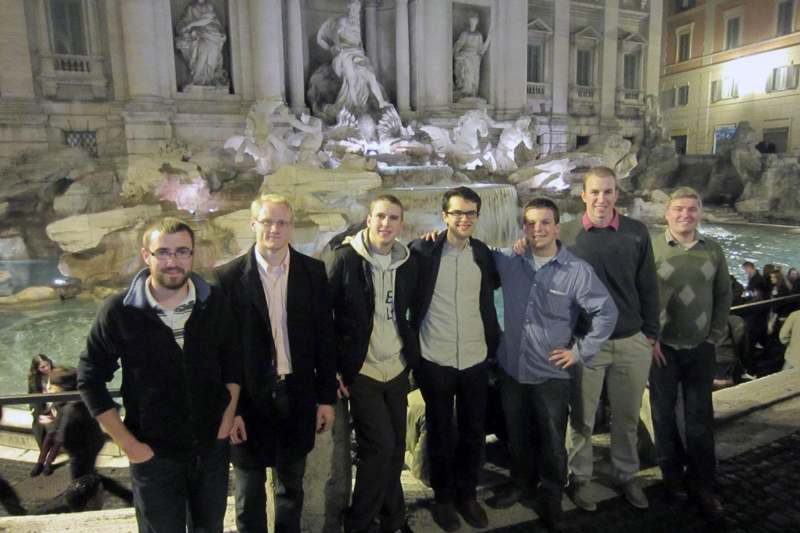
On the last night in Rome (after a splendid farewell feast), Charles Hill '14, Wes Adams '14, Josh Jones '14, Michael Carper '13, Nate Chapman '14, Stephen Batchelder '15, and Dr. Sears took a stroll through the historic center of Rome. Here they pose in front of the iconic Trevi Fountain. Though it dates to the Baroque period (and thus beyond the class' scope), it marked the ancient spot of a Roman aqueduct and was built to celebrate the aqueduct's rebuilding. Folklore has it that if you throw a coin backward into the Trevi Fountain, you come back to Rome.

